What To Pack For An African Safari: The Ultimate Guide
Going on an African safari will be an unforgettable adventure filled with breathtaking scenery and awe-inspiring wildlife encounters. Packing the right essentials will help you make the most of this dream-of-a-lifetime trip. From clothing and gear to questions about luggage, discover what to pack for an African safari.
Our African Safari Packing Guide, based on our own African safari experience, will ensure you’re well-prepared for your vacation. Read on and get ready for the adventure of a lifetime!
On To New Adventures contains affiliate links and is a member of the Amazon Services LLC Associates program. If you make a purchase through our affiliate links, we may receive compensation from the company at no cost to you. Read our disclaimer for more information.
Pack For An African Safari: First Check In With Your Tour Operator
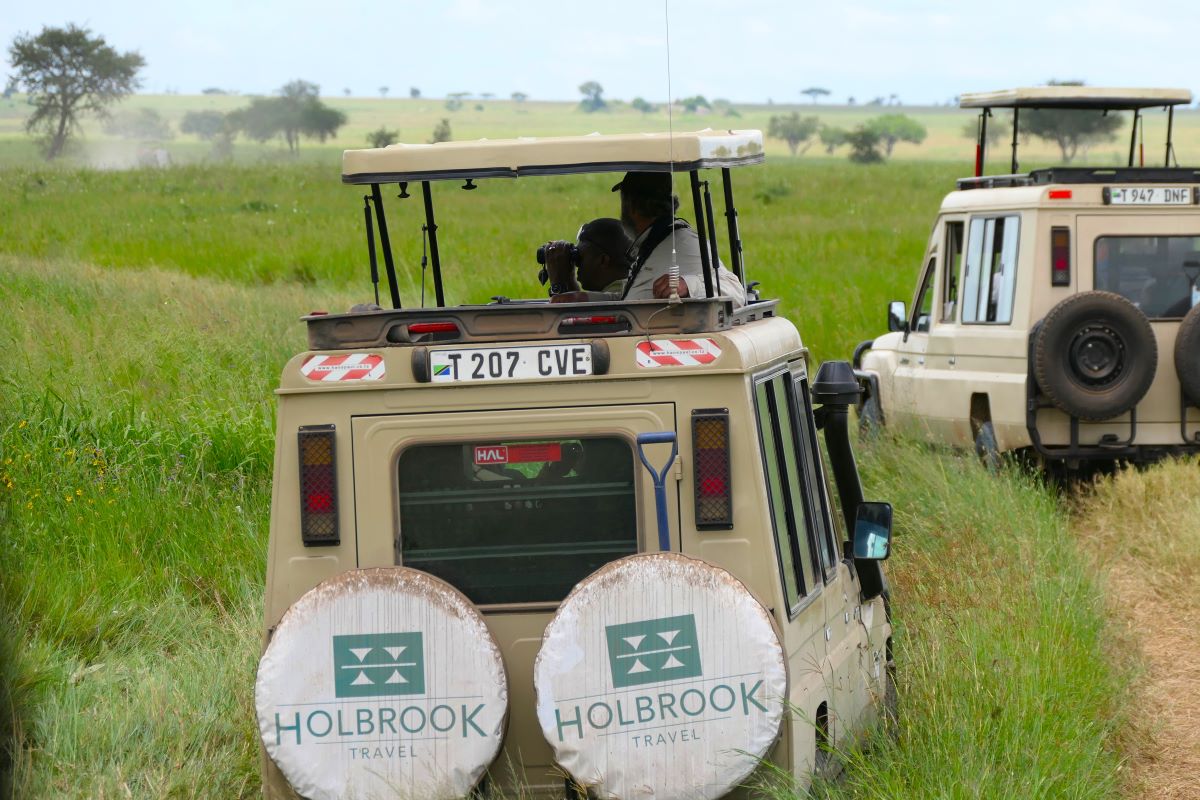
Preparing for your very first African Safari can be a bit tricky. Consulting with your tour operator is crucial in order to tailor your packing list to the specific conditions you will encounter on your trip.
What will the weather conditions be like during your visit? Do you need to be prepared for rain and mud, daytime heat, or cold temperatures at night? Are you going to areas where mosquitos and tsetse flies are active? Will you need a tourist Visa or vaccinations?
Keep in mind that many of the most popular safari destinations are located below the equator in the southern hemisphere. This means that the seasons occur at opposite times than in the northern hemisphere. We traveled to Tanzania at the end of May, after their hot summer months and the rainy season there, heading toward winter.
One bonus of not traveling during the dry season: we were rewarded with a beautiful view of Mount Kilimanjaro. The mountain can be difficult to spot during the dry season due to dust in the air.
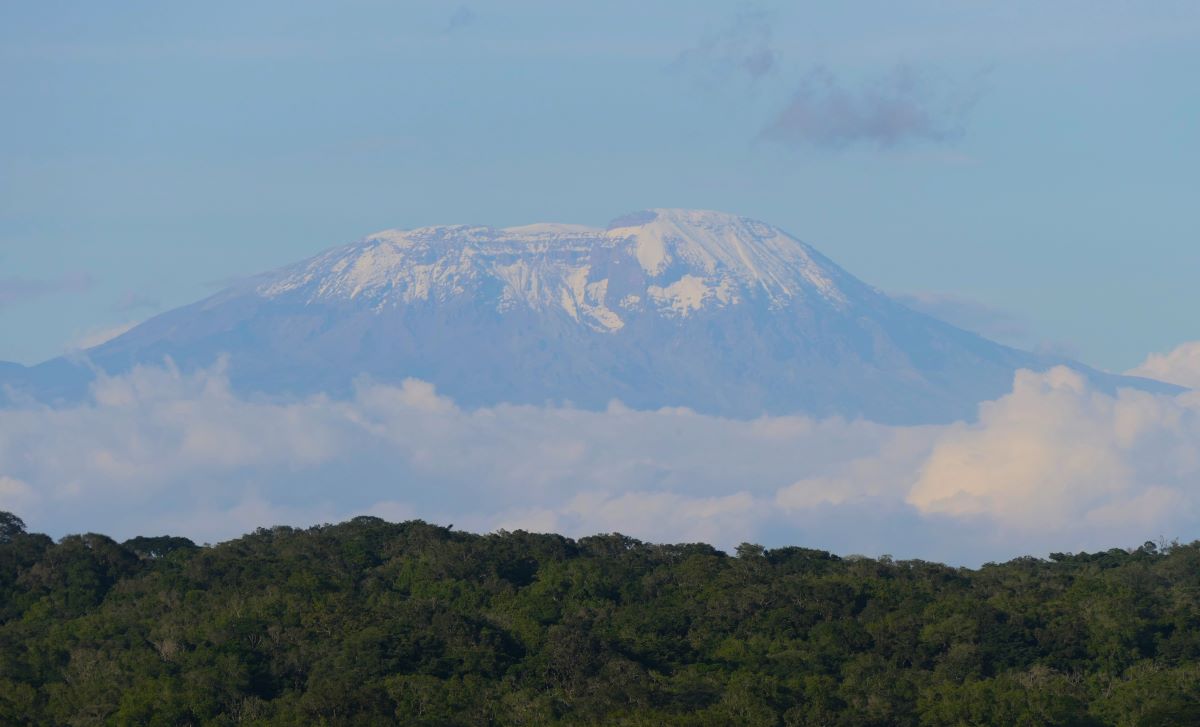
We chose Holbrook Travel Company for our tour Tanzanian tour. Holbrook prioritizes sustainable and responsible tourism, and has extensive experience in organizing safaris. We loved our exceptional, professional guides, all born and raised in Tanzania.
Luggage
Above all, check with your tour operator regarding luggage restrictions. Many safari vehicles have limited storage space, especially when travelling overland from one accommodation to another, or when flying on small aircraft that are commonly used in safari transfers.
When our group gathered at the Pazuri Inn the first evening of our Tanzania tour, we were each given a 22 by 11.8 by 11 inch canvas duffel bag to stow all of the clothing and gear we’d need during our 9 day safari. We were also allowed a small daypack to carry binoculars and camera equipment.
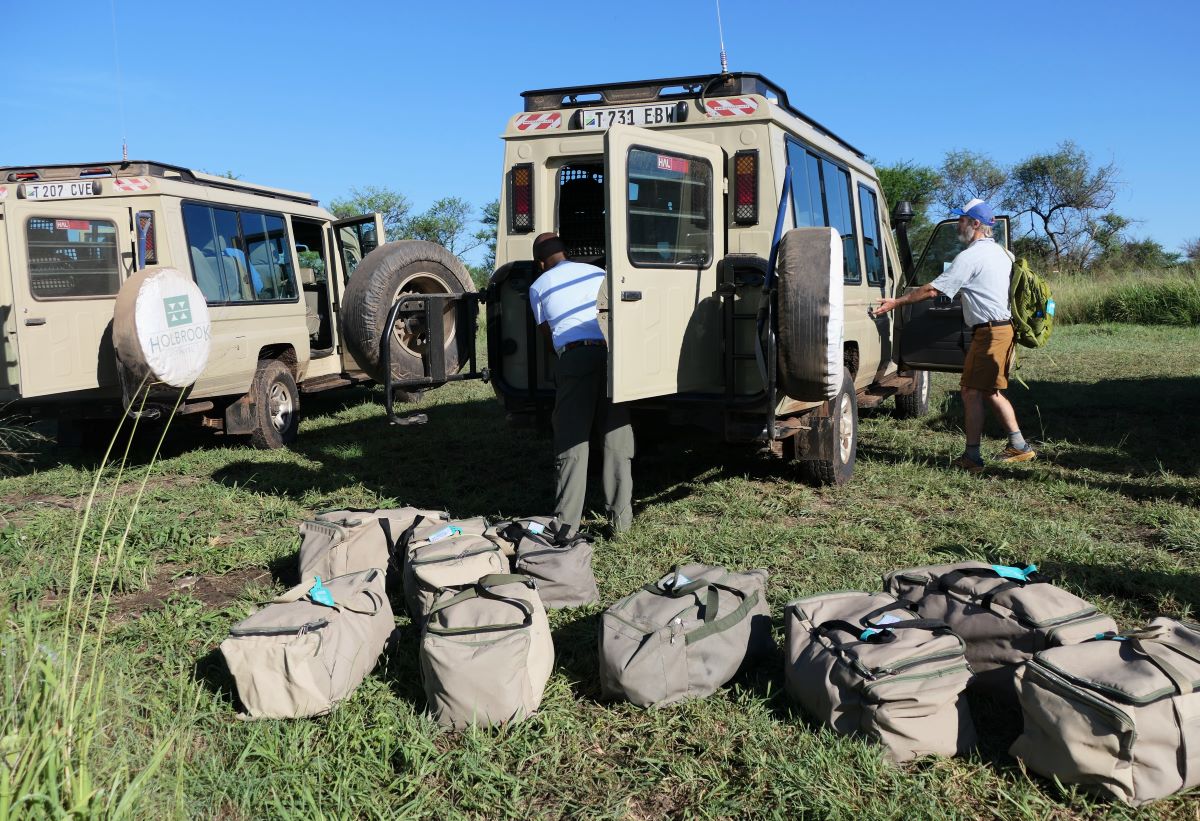
Anything extra that couldn’t fit in the duffel was stashed in our original luggage and stored at the hotel until our day of departure. For us that included the comfy sneakers and outfits we wore on the plane, travel neck pillows, and even our canteen-type water bottles. We realized we didn’t need them, as we were unable to drink the local water and therefore couldn’t refill water bottles along the way.
Our tour company provided plenty of bottled water throughout our adventure: verify that yours will do the same.
Other tour operators may allow you to carry your belongings in your own bag. Your luggage will be stowed in in a safari jeep, and should not have wheels, hard sides, or a rigid frame. This Eagle Creek Duffle is a great option.
Essential Clothing To Pack For An African Safari
Neutral Colors
Neutral colors such as khaki, gray, tan and forest green are popular on safaris for a reason. Black and blue clothing can attract tsetse flies.
Trust me: your safari jeep is going to kick up dust, and white clothing will show every speck. In addition, many types of prey species flash white tails when they are alarmed by predators. Leave your white clothing at home, unless you want to carry something along to wear in the lodge at night.
Bright colors, especially red, can frighten animals off. Red is often worn by members of the local Maasai tribes, who are herdsmen and want to scare predators such as lions, cheetahs and hyenas away from their livestock.
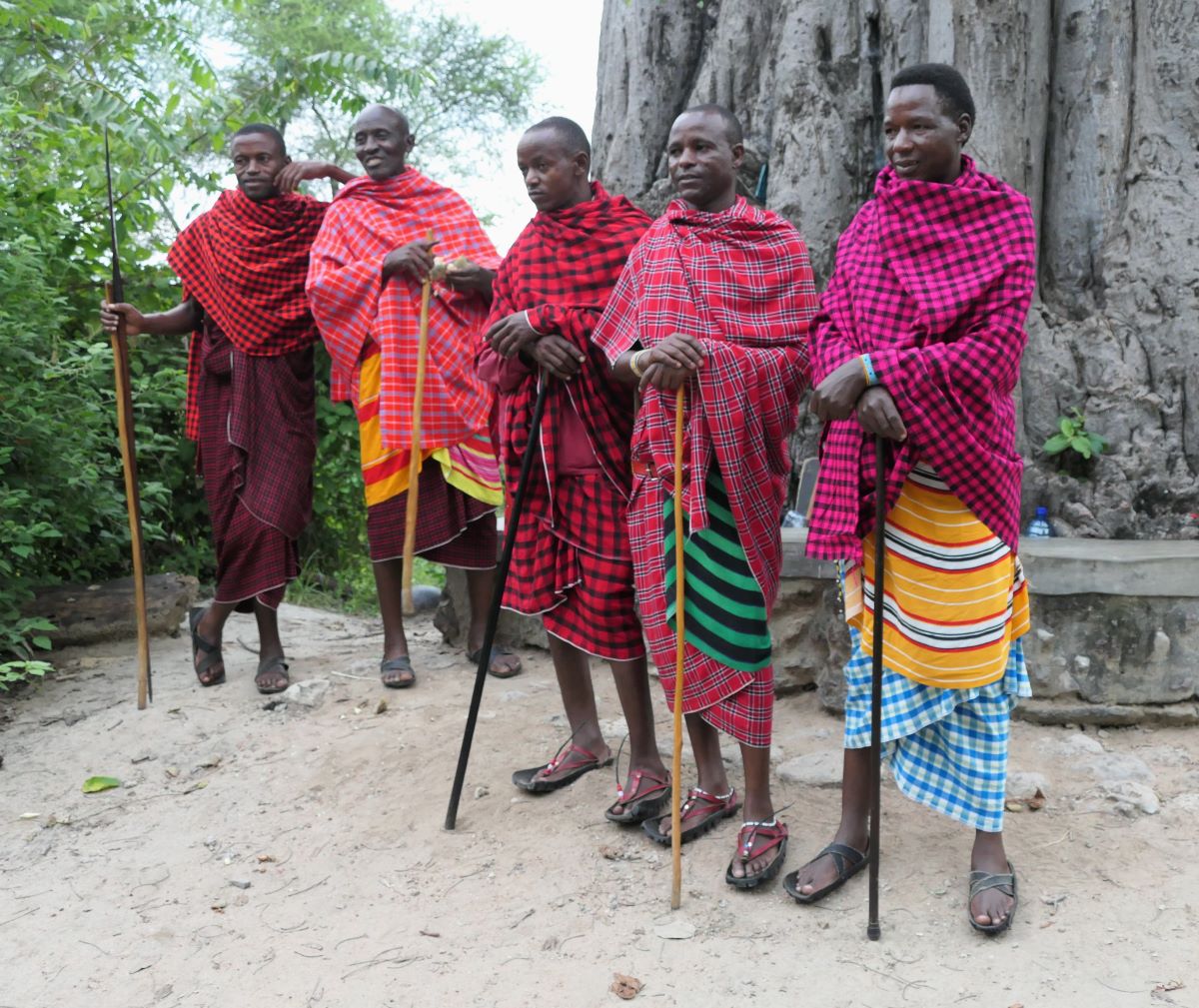
Wearing camouflage clothing is illegal for civilians in Tanzania and other African countries, as it s reserved for the military. So skip the camouflage in order to avoid unwanted attention at the airport.
Read on for the must-have clothing items that will help keep you comfortable in the heat and protect you from insects during your African adventure.
Pack Light Weight, Quick Drying Clothing For Your Safari
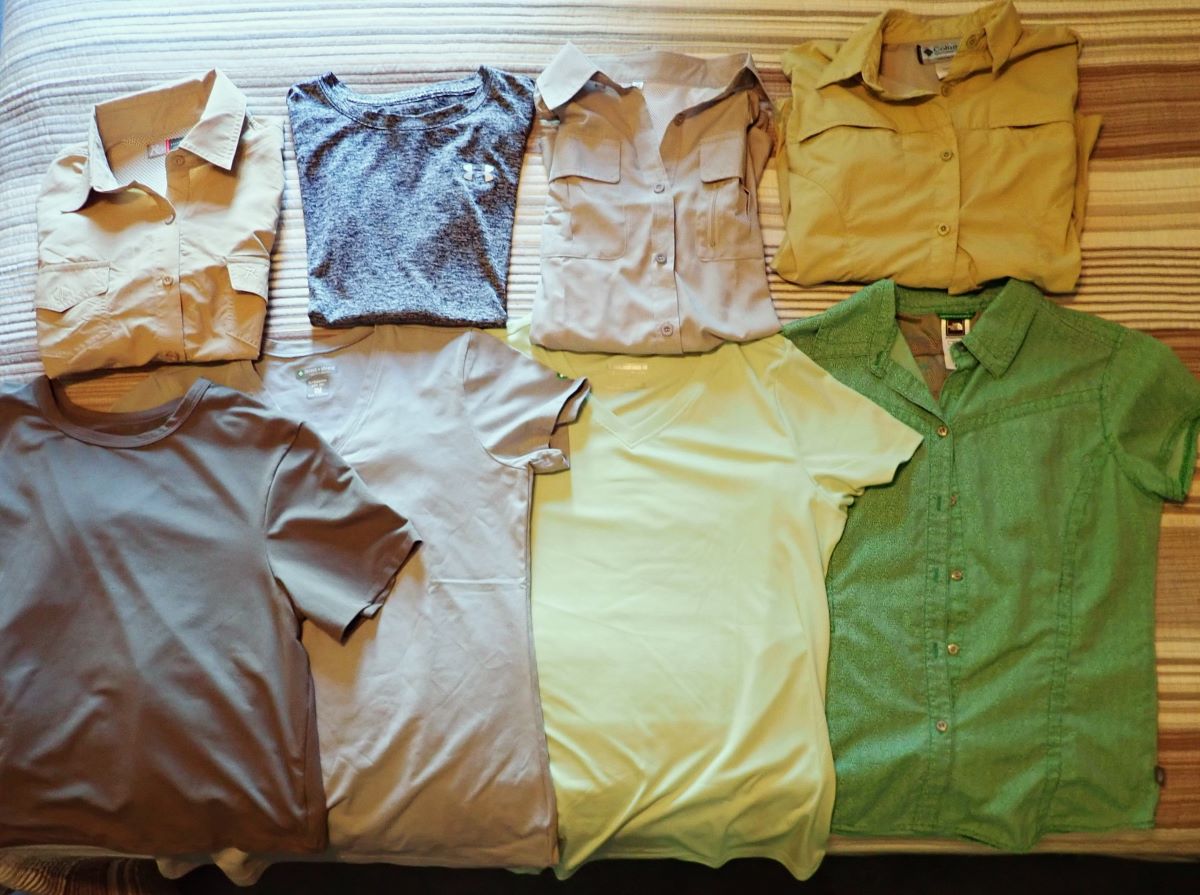
The clothing you wear during your days of wildlife-spotting should be light weight and quick to dry.
We arrived as scheduled for our Tanzanian safari, but our luggage did not catch up with us until four days later. And we definitely we not the only ones in line at the Kilimanjaro airport to report our lost luggage! Luckily, we each packed one set of a safari shirt and pants in our carry-on. (and had an Apple Air Tag in our checked bag)
As expected, we were hot and dusty after a day of sight-seeing in safari jeeps. Upon arriving at our overnight accommodations, we walked straight into the shower fully dressed in our one set of safari clothing. We washed our shirts, pants, socks and underwear with the provided body wash and hung our clothes up overnight.
The air in Tanzania was somewhat humid during our visit, so even our lightweight clothing wasn’t always fully dry by morning. (especially our socks) We donned our damp clothes and they quickly became dry shortly thereafter.
Pro-tip: Plan on using the laundry service any time you spend more than one night in one place. The ability to do laundry once or twice during your trip will help you pack light. You can always wash items out in your sink, but you can’t count on them being dry by the time you leave in the morning. Cotton in particular and jeans especially should be avoided due to their long dry time.
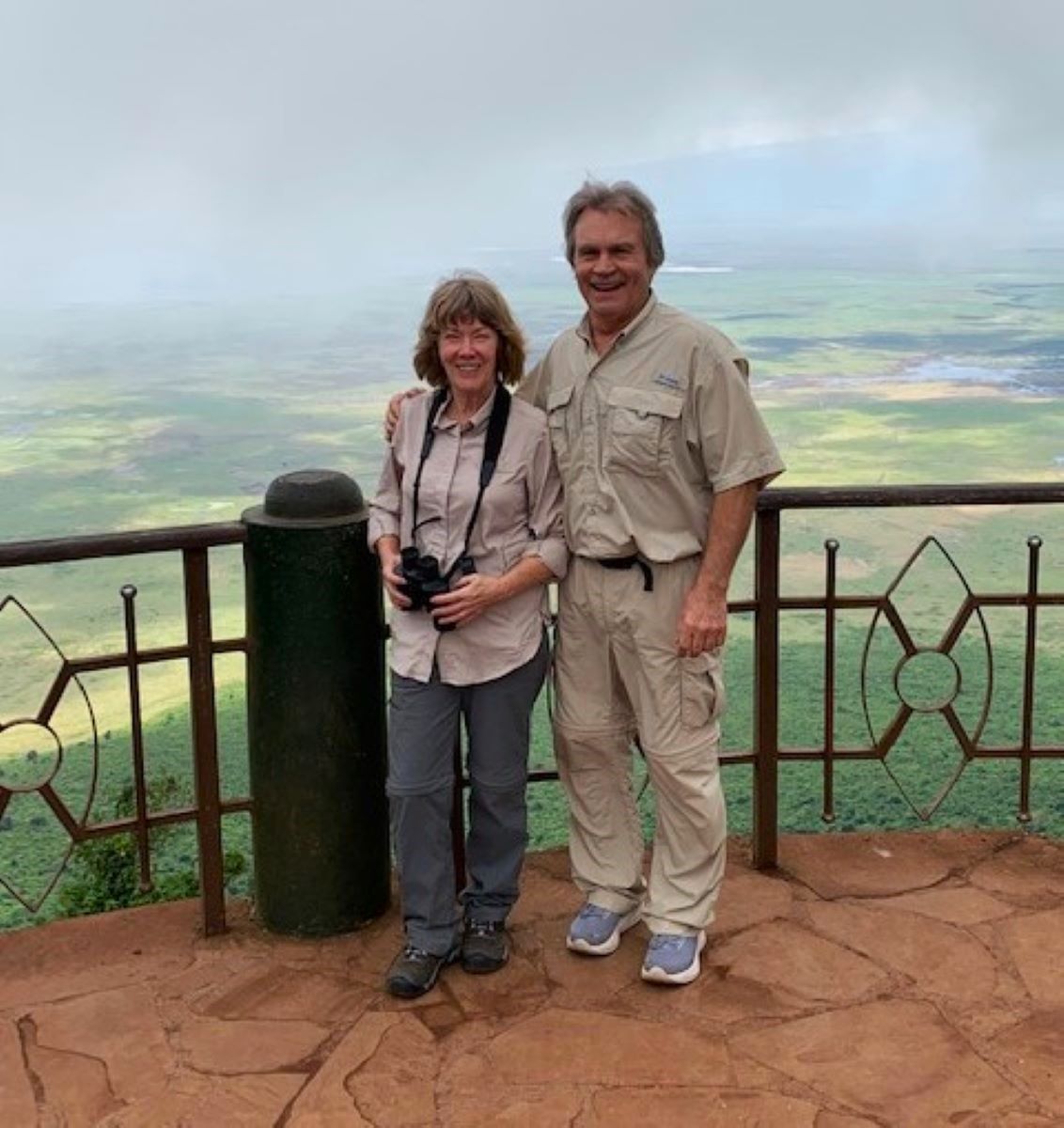
Long-Sleeved Shirts
Plan on packing at least 2 long-sleeved shirts, as they protect against both the sun and insects. Moisture-wicking fabric is important, as it wicks sweat away from your skin and helps keep you cooler during the mid-day heat.
In the photo above, I’m wearing my Viodia Sun Protection Fishing Shirt. This shirt fastens with snaps, which I found easier to deal with than the tight button holes I found on other safari shirts. A back-vent really does help you stay cool, and the long sleeves snap up into short sleeves. The little logo strip has a Velcro patch, which can be used as a sunglasses hanger loop. I really loved the comfort of this shirt, which was a huge plus, as I ended up wearing it four days straight!
Here is a link to a Men’s Long Sleeve Sun Protection Safari Shirt. It’s water resistant, and also has zippered pockets and a sunglasses loop.
Consider buying at least one shirt with built-in insect protection. We were especially thankful we had insect repellent clothing as we toured Tarangire National Park. Numerous tsetse flies found their way into our vehicle, and we were thankful to have avoided all but a few bites.
Also consider shirts with built-in UPF sun protection. And added plus is roll-up sleeves for times when you’re on the move in the safari vehicle.
Short Sleeved Shirts
Pack two short-sleeved shirts. David and I each had one tee shirt and one short-sleeve safari type shirt.
This Women’s Insect Repellent Short Sleeve V-Neck Shirt with Sun Protection checks all of the boxes. It’s lightweight with UPF 30 sun protection. It has permethrin repellent built right into the fabric for an instant layer of insect shield. The repellent is effective for close to 70 washings.
You can’t go wrong with a Safari shirt from Columbia. It comes with built-in sun protection, and a mesh-lined back vent helps keep you cool.
For a men’s tee shirt, check out BALEAF’s UPF 50 sun protection short sleeve shirt.
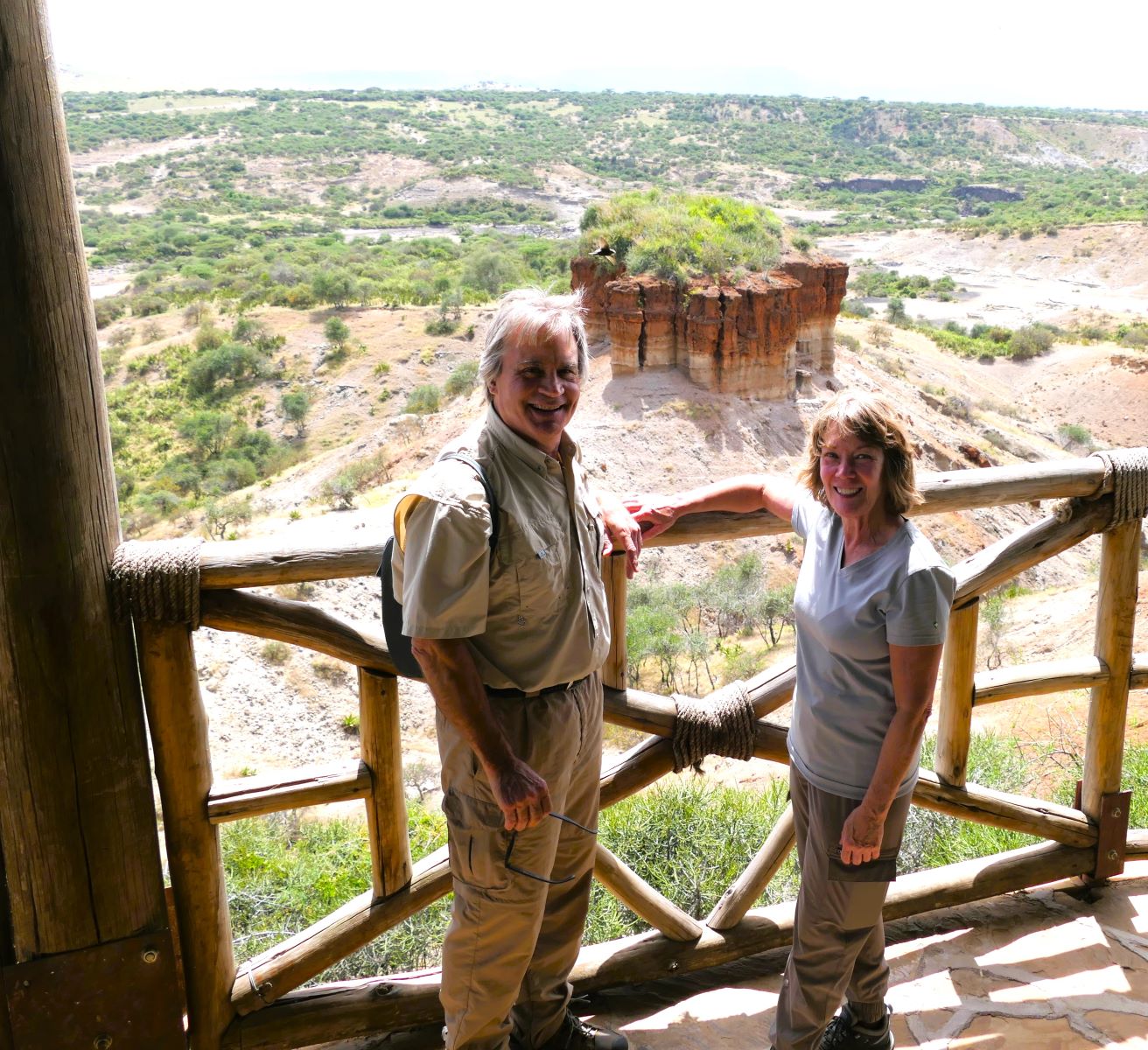
Quick Drying, Lightweight Long Pants
You can’t go wrong with these Women’s Convertible Safari Pants. The quick-dry fabric is water resistant and has UPF 50 sun protection. Zippers just above the knee remove the lower pant leg to transition to shorts. It’s also possible to roll up the lower legs and fasten them into a capri length. I love all of the pockets, including a zippered pocket large enough to hold a cell phone. The smaller pockets came in super handy for carrying some toilet paper, lip balm and eye drops along in the jeep.
In the photo below, David is wearing these Men’s Convertible Safari Pants. Zippers at the knee again make it easy to transition from long pants to shorts. They are also water resistant and contain UPF 50 sun protection.
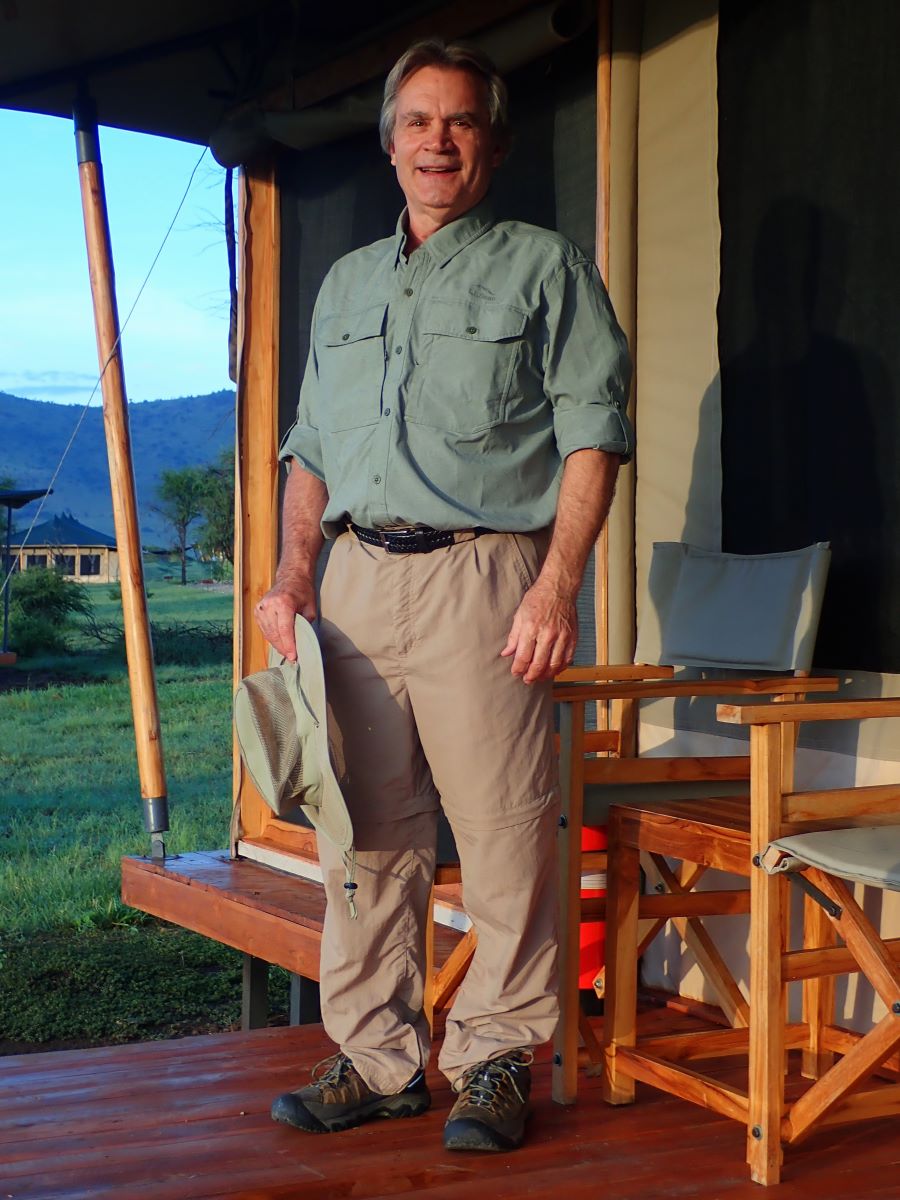
Shorts
It’s nice to have two pair of shorts on safari. For us, having zip-off long pants meant we automatically had a pair of shorts to transition to as the days warmed up. We each packed one additional pair of shorts.
I opted for these Women’s 10 Inch Cargo Shorts. The breathable fabric helps keep you cool, and it is water repellent and has UPF50 sunblock built right in. Once again, pockets are perfect for storing small items, especially the zipper cargo pocket.
Oops! I didn’t get a photo of me with my cargo shorts in Arica. Here I am wearing them in Colorado, along with my Furtalk Sun Hat.
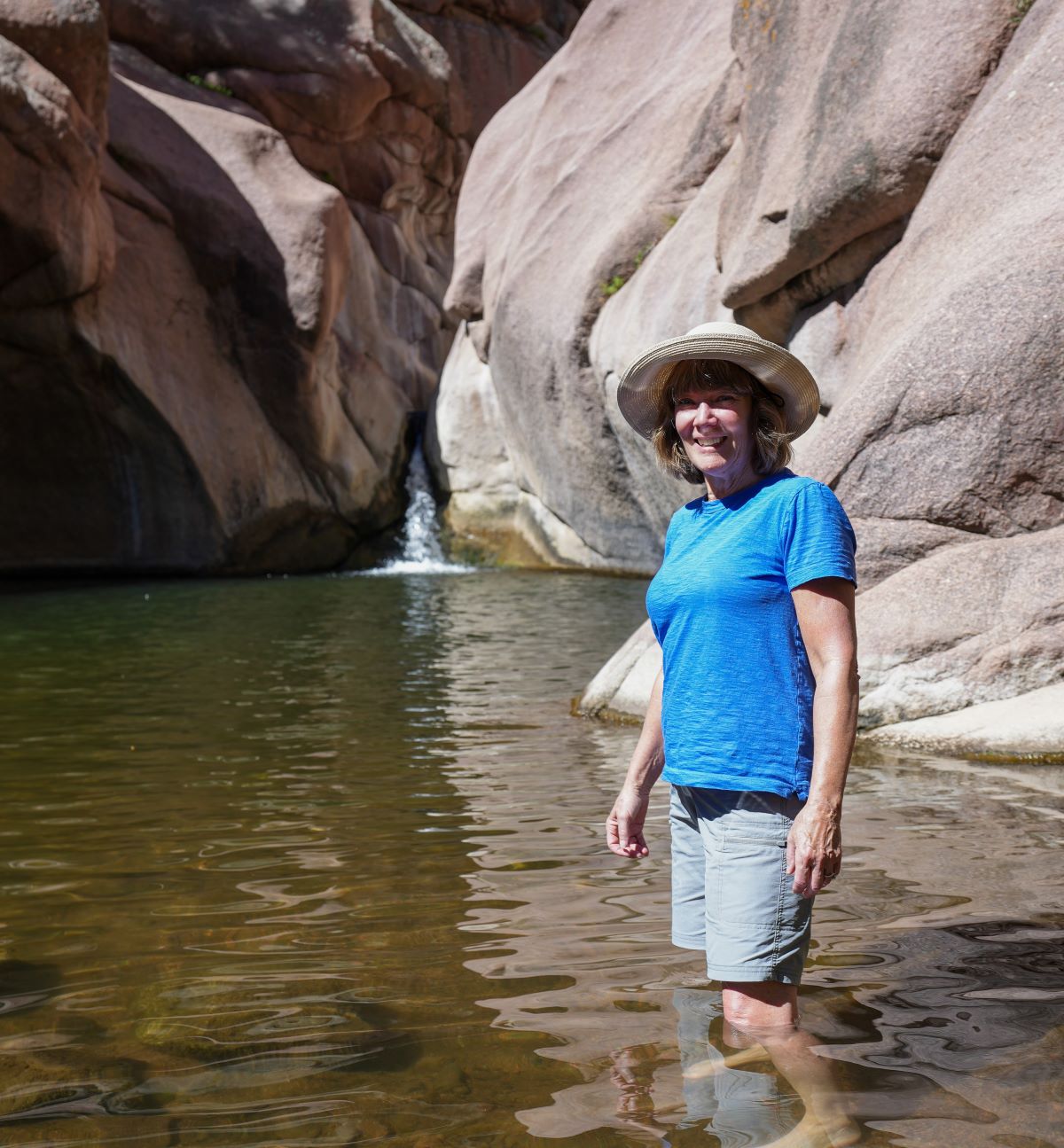
Safari Coat Or Fleece Jacket
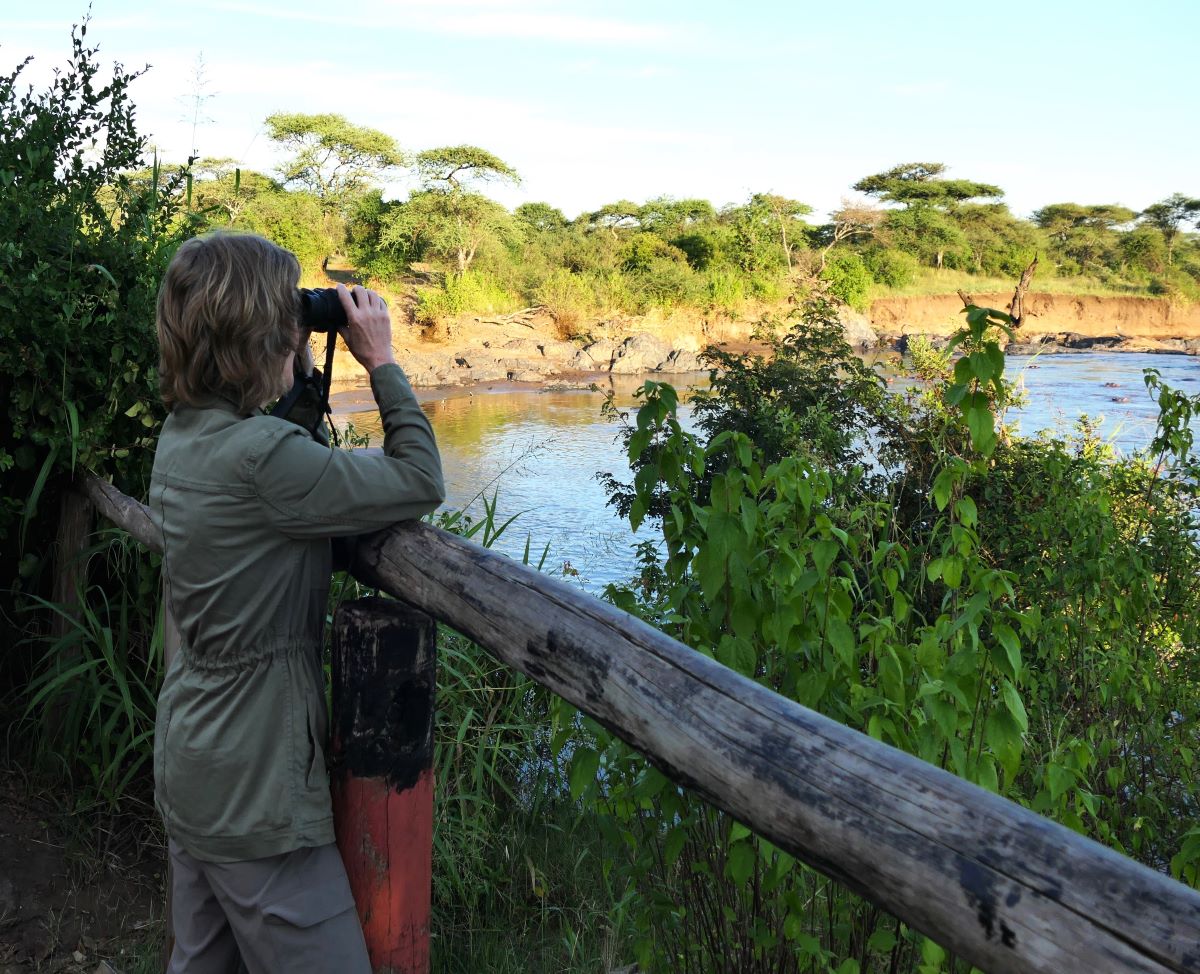
Bring a safari coat of a fleece jacket for cool morning game rides or spending time in higher elevations. I was happy to have my Women’s Safari Utility Coat when we got up before sunrise to view a river pool frequented by hippos. You need to get there at dawn in order to see hippos retuning from their nighttime grazing grounds to the water where they hang out during the day.
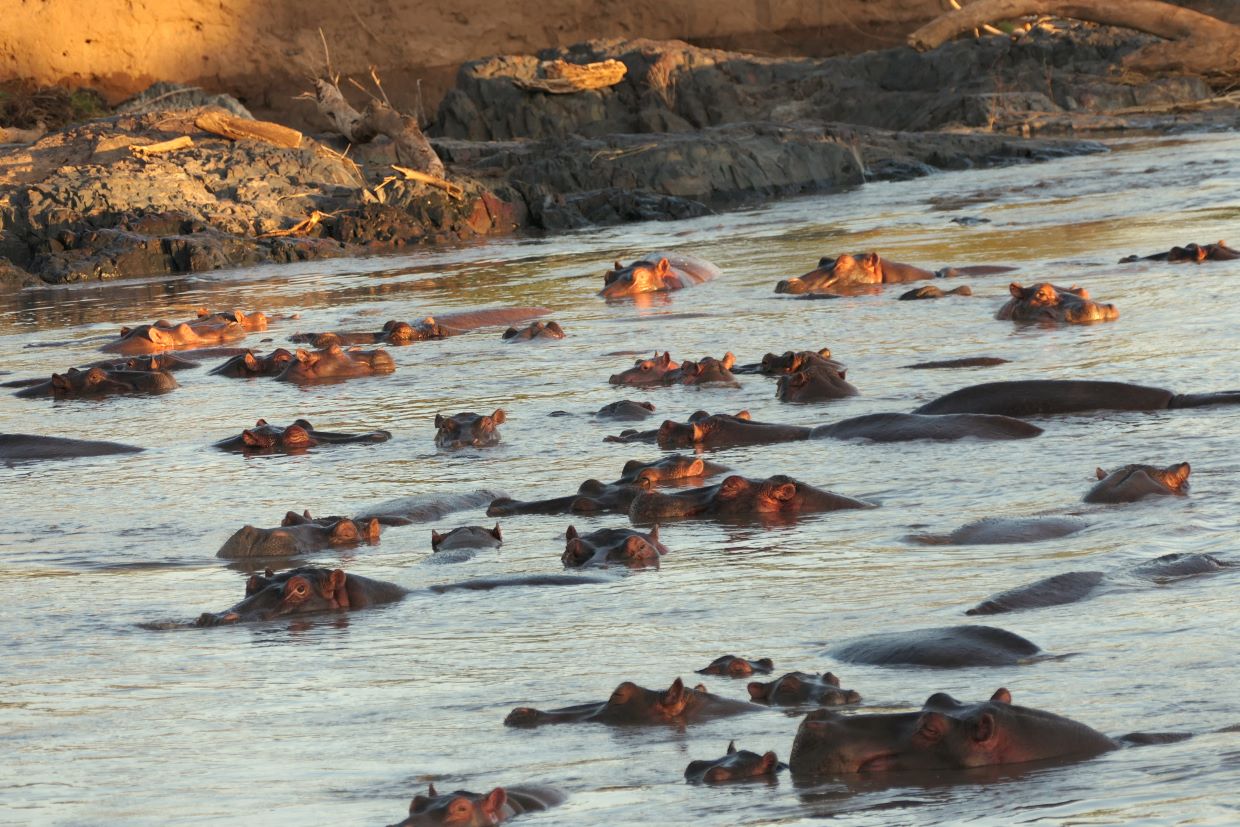
My jacket also came in handy as we were staying at the Ngorongoro Serena Safari Lodge, located at 7,546 feet along the rim of the Ngorongoro Crater.
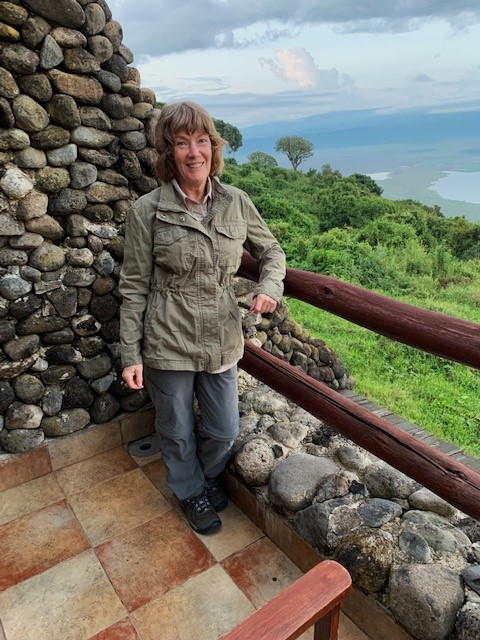
This Men’s Zip-up Fleece Jacket from Columbia is another great option.
Lightweight Windbreaker Or Poncho
You’ll want a lightweight jacket to wear mornings and evenings. David and I each had a windbreaker. This Columbia Women’s Switchback III Jacket is both lightweight and waterproof, and it comes in a variety of colors.
We opted to skip a raincoat as we weren’t likely to encounter more than an occasional shower, and most safari lodges have ponchos for their guests. We spent ten days on safari in Tanzania at the end of May. While this is considered to be the end of the rainy season, we only experienced a 45 minute downpour one evening.
Do pack a good rain jacket if you are traveling during the rainy season. Or consider purchasing an inexpensive, breathable Ultra-Light Rain Poncho.
Sweater Or Sweatshirt
Definitely bring a sweater or sweatshirt to wear around in the evenings. Keeping with one of my favorite brands, check out the Columbia Women’s Sun Trek Sweatshirt.
Socks
We absolutely recommend purchasing two pair of insect-shield socks. If you decide to buy just one item of insect-repellent clothing, make it be socks. Ankles seem to be a favorite target of biting insects! Crew socks definitely provide more protection.
I’d say pack the amount of socks that you think you will need, and then throw in an extra pair or two for good measure.
Travel Slippers
Many of the places where we stayed had tile floors, which could be quite cool in the early morning. I recommend packing some travel slippers or extra thick socks for walking around on cold floors. These men’s slippers socks with a non-skid bottom are my ultimate favorite, as they easily roll up and take up very little room in your travel bag. Of course, there are women’s slippers socks as well.
Hiking Shoes Or Boots
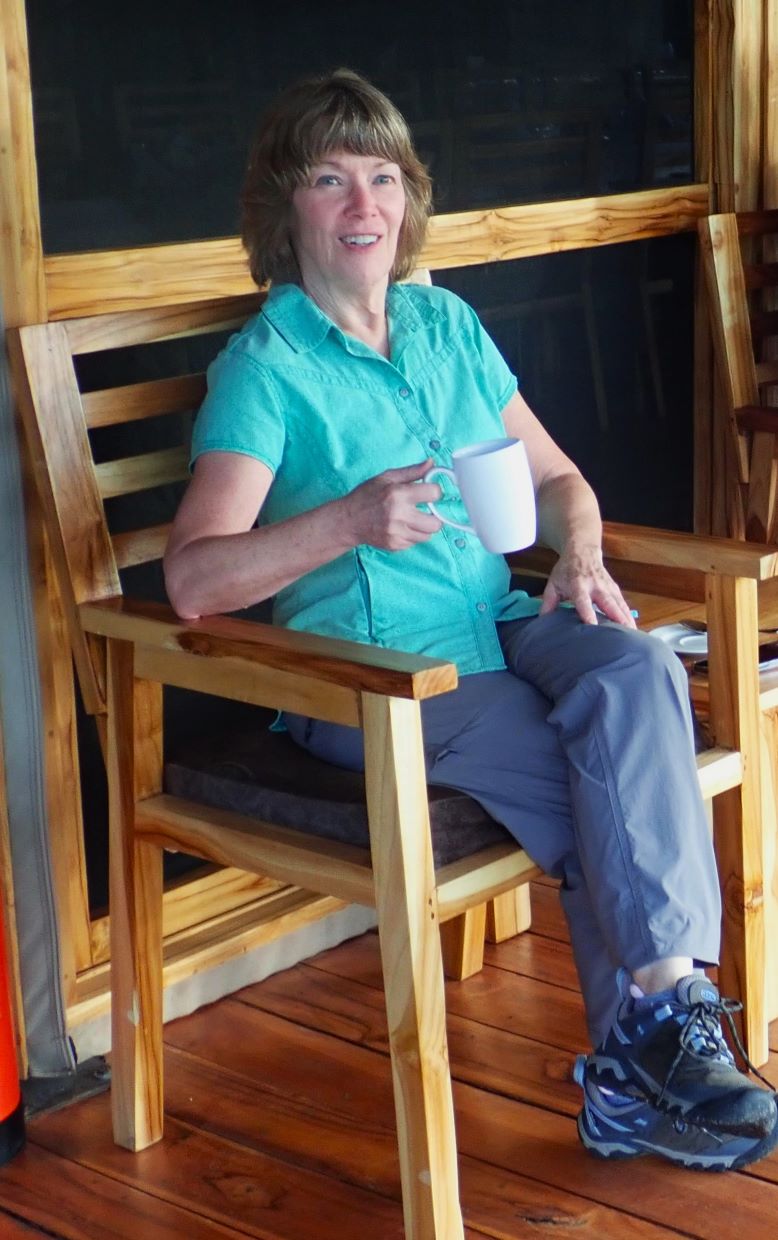
Plan on wearing a durable, comfortable pair of closed-toe hiking shoes or boots most days of your safari. The majority of your time will likely be spent in a safari vehicle, meaning you can skip the heavy, leather hiking boots. Go for a hiking shoe or mid weight boot that offers a bit of ankle protection.
Chances are you’ll go on a short bush walk at some point. Plus you may encounter a downpour or muddy conditions if you are staying in a tented camp, so waterproof footwear is a plus. These waterproof Merrell Moab 3 hiking shoes provide the perfect blend of comfort and support.
Heading out on a walking safari? Or perhaps hiking in to see gorillas? Increase the level of support with the Merrell Moab 3 Hiking Boot instead.
You may opt to bring your favorite pair of sneakers if you have a little leeway with your luggage restrictions. Due to the dimensions of our safari duffels, our sneakers stayed in our suitcase left behind at our Arusha hotel. We were grateful to have them on the plane!
Casual Sandals or Flip Flops
You’ll be ready to kick off your boots at the end of the day. We packed sturdy sport-strap sandals, perfect for some uneven terrain in our tented camps.
My go-to favorite are Keen’s Closed Toe Adventure Sandals. They provide toe protection and a bit of arch support. They’re quick drying in case you go in and out of water. An added plus: they’re machine washable.
Pro tip: Flip flop lovers might consider leaving their favorite pair at home. We love supporting the local economy when we travel. There were many opportunities to pick up beautifully decorated flip flops in gift stores throughout Tanzania. You might even make it a point to purchase a pair before even leaving the airport.
Bandana, Scarf, Or Buff
It’s a good idea to carry some sort of bandana, scarf, or buff with you. A buff is a fabric tube that can be worn around your neck to protect from sun and insects, and pulled up over your nose to keep the dust out. You can also wrap it around your camera, lenses or binoculars to protect them from dust.
This Insect Repellent Buff also has UPF 50 sun protection. It can be worn 12 different ways. I used it as a neck gaiter, a head band, and as a face mask.
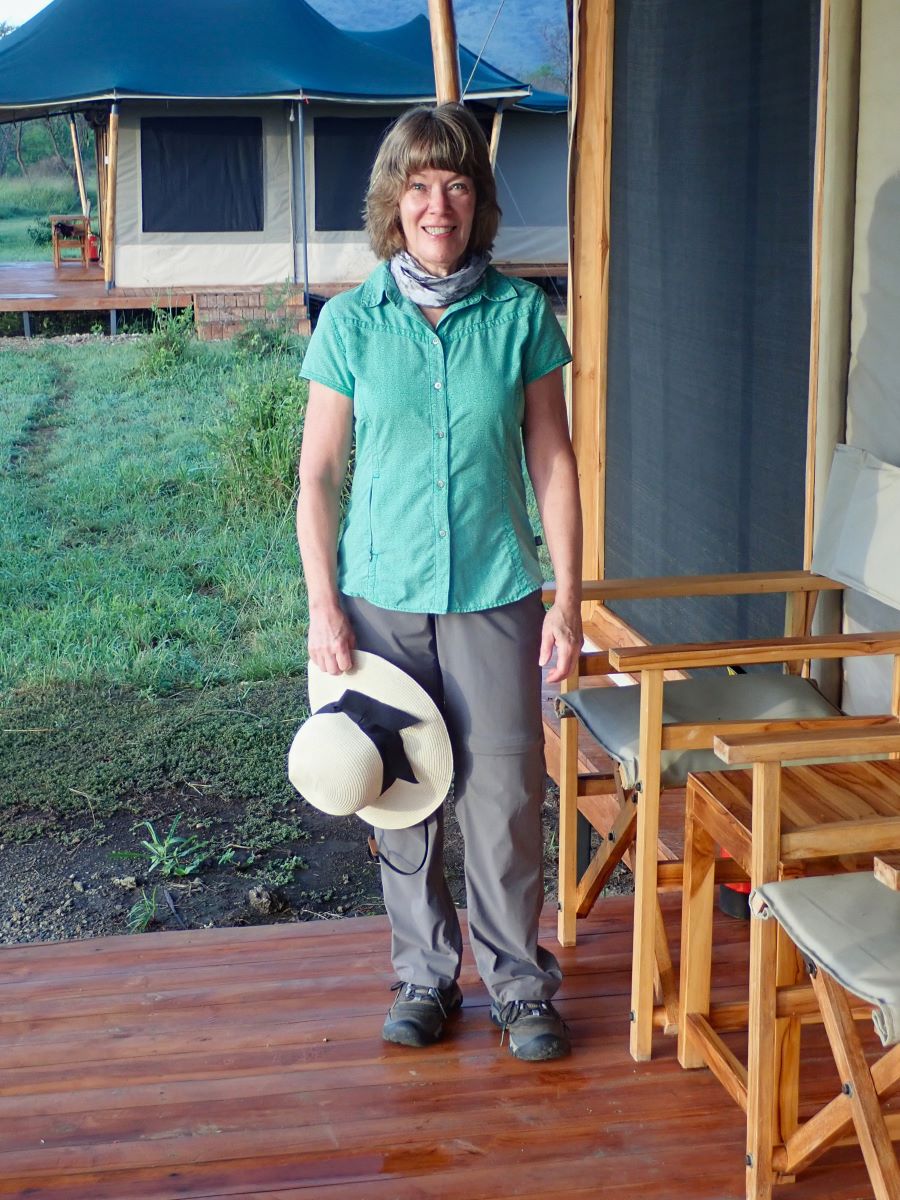
Wide-brimmed Sun Hat
I absolutely love my Foldable Furtalk Straw Sunhat. It has a wide floppy brim and UPF 50 sun protection built in. It actually folds right up in your suitcase and then pops back out into shape. I bought mine originally for a Caribbean cruise, and use it all of the time when gardening. I opted not to buy an additional safari hat, and it worked out just fine in Tanzania.
You can also opt for a traditional safari hat. There are plenty of versions available with built in sun protection.
Baseball Cap Or Sun Visor
Bring a baseball cap or sun visor in addition to a wide-brimmed sun hat. We spent much more time in the safari jeep than we did walking around out in the sun. My baseball cap was perfect for those times when bright sun came in through the open top of jeep.
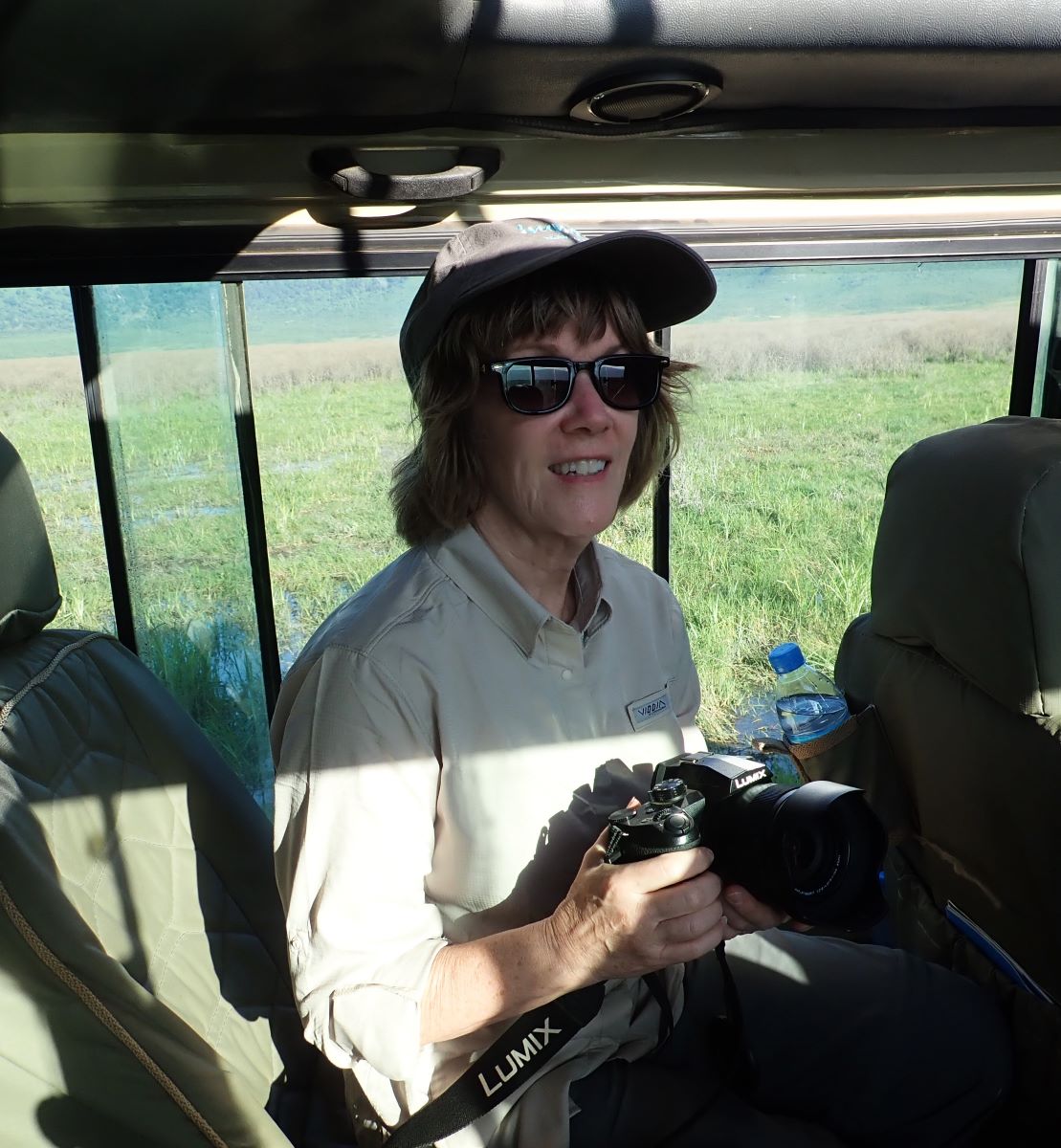
Underwear
Pro tip: While it’s important to pack light, don’t skimp on underwear. In many lodges, the staff will not launder underwear, as it’s considered unseemly for someone else to handle your private garments.
Pajamas
Think about what you want wear to sleep in at night. On safari, I went with a tank top and shorts, but it’s all about what makes you feel comfortable.
Bathing Suit
Is it a good idea to pack a bathing suit while on safari? Yes, yes, and yes! Many hotels and lodges have swimming pools, and it’s the perfect way to refresh after a day of bouncing around in a dusty jeep.
Women may get by without a cover-up at some of the larger tourist lodges, but I’d advise packing one in order to be respectful of cultural norms.
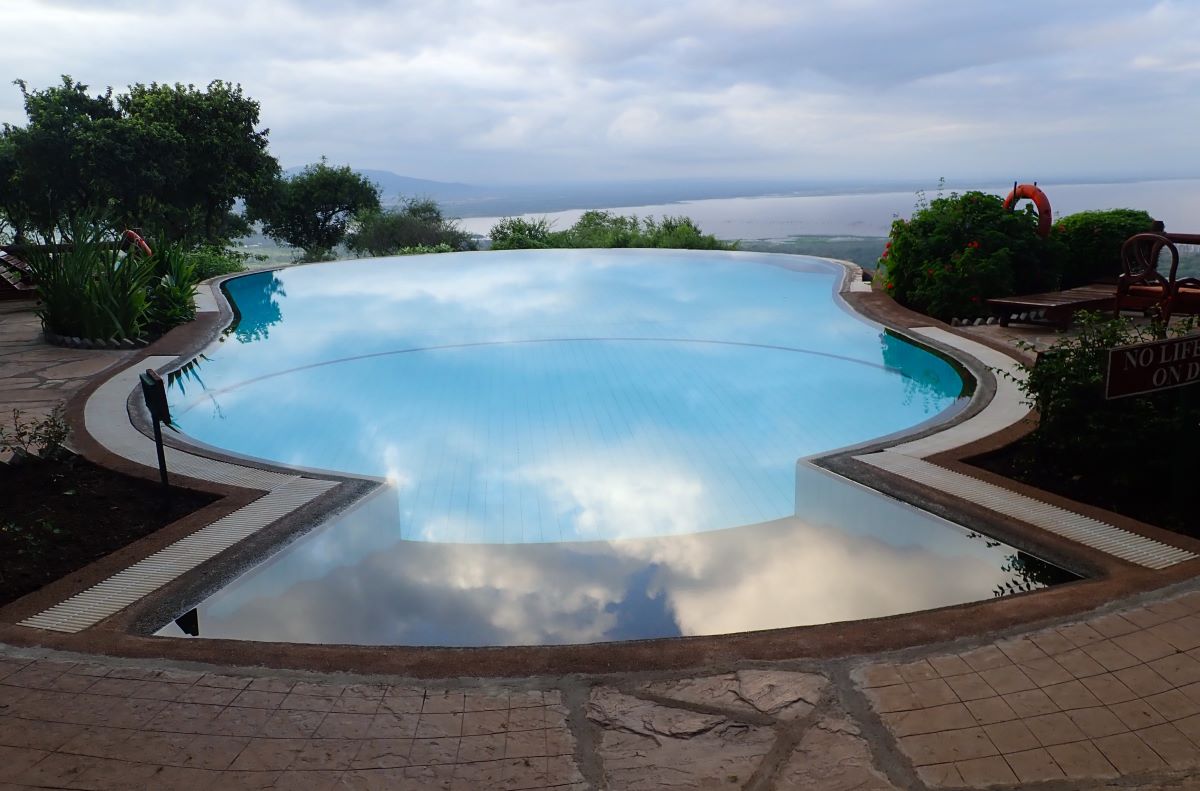
Safari Gear You Don’t Want To Leave Behind!
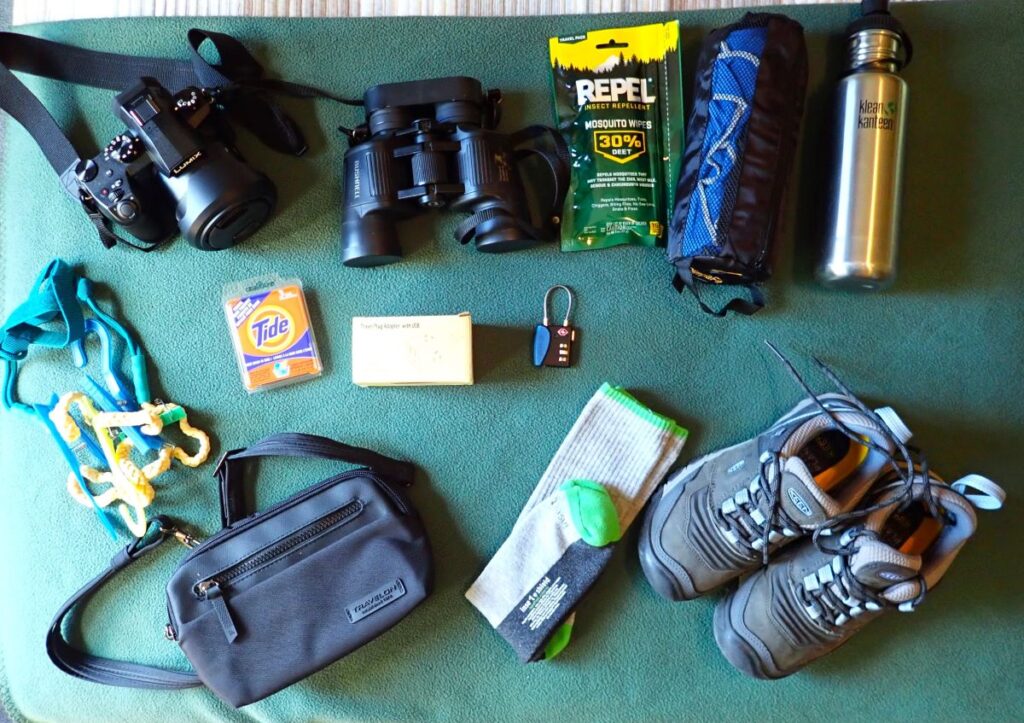
Sunglasses
High-quality sunglasses are essential for going on safari. Look for UV protection and polarized lenses to reduce glare from surfaces like water and sand, making it easier to see animals and landscapes more clearly.
These Womens Ray Ban Sunglasses are a terrific option.
Daypack
You’ll want a compact backpack to carry along on your daily game rides to carry items like sunscreen, lip balm, eye drops, binoculars and snacks. Consider something along the lines of the Paravel Foldable Travel Backpack.
Photography Equipment
Perhaps the most important investment to make before your trip is in a really good camera. You’ll want lasting memories of stunning African landscapes and wildlife.
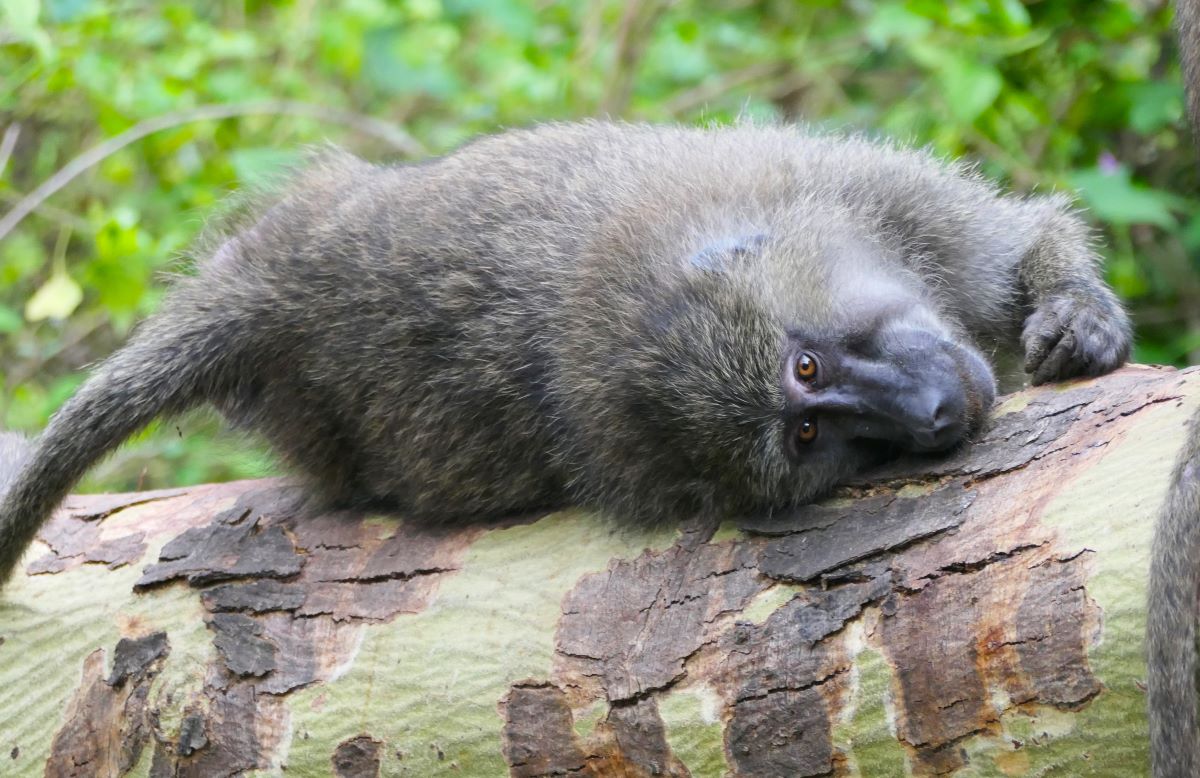
DSL Camera
I strongly suggest bringing a premium DSLR camera on your African safari. They are able to capture high quality photos and videos that cell phones and compact cameras just can’t match.
A few weeks before our trip, I decided to invest in a good DSL camera. I asked a friend who is a professional photographer for advice. He recommended the Panasonic Lumix FZ 1000ll.
Entry-level photographers can take great photos with the autofocus on this camera. There are Intelligent auto settings for conditions such as portraits, backlit subjects, scenery, action shots, sunsets, and night sky.
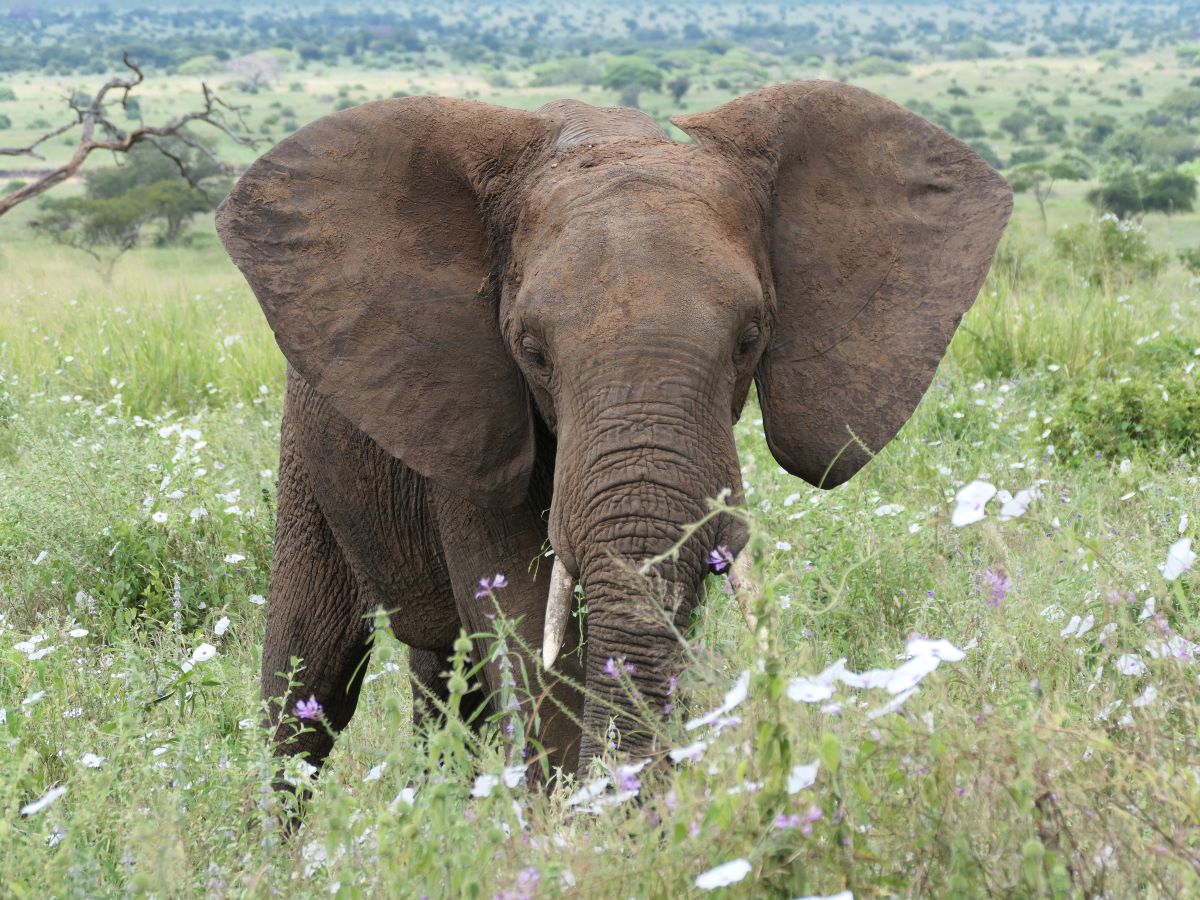
Experienced photographers can get creative with all of the manual options. Adjusting settings like shutter speed and ISO ensures you can get great photos of fast-moving animals in varying light conditions.
The Lumix FZ appealed to me because of its great Zoom capabilities. The camera also has the ability to take high clarity videos.
Here we have a photo of a lioness taken with my cell phone next to one taken with my DSL camera. There is no comparison as far as clarity is concerned, as well as the ability to zoom in for an up-close image.
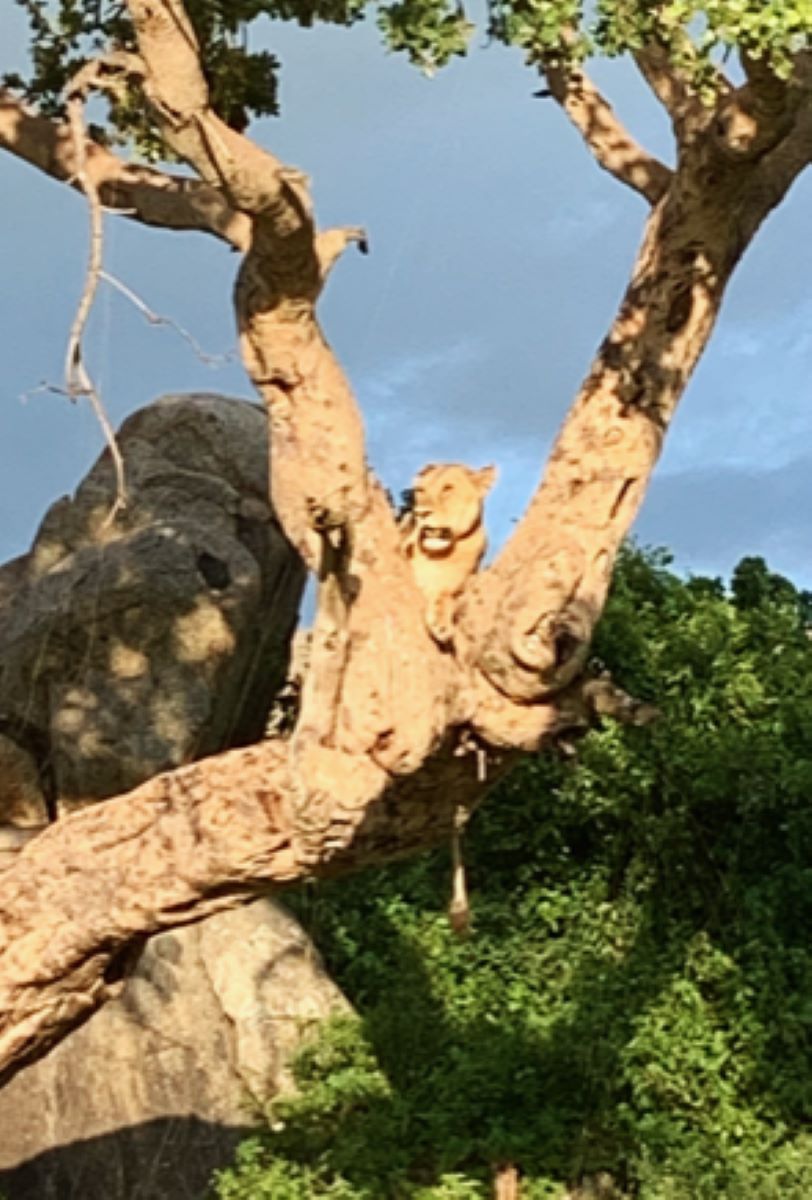
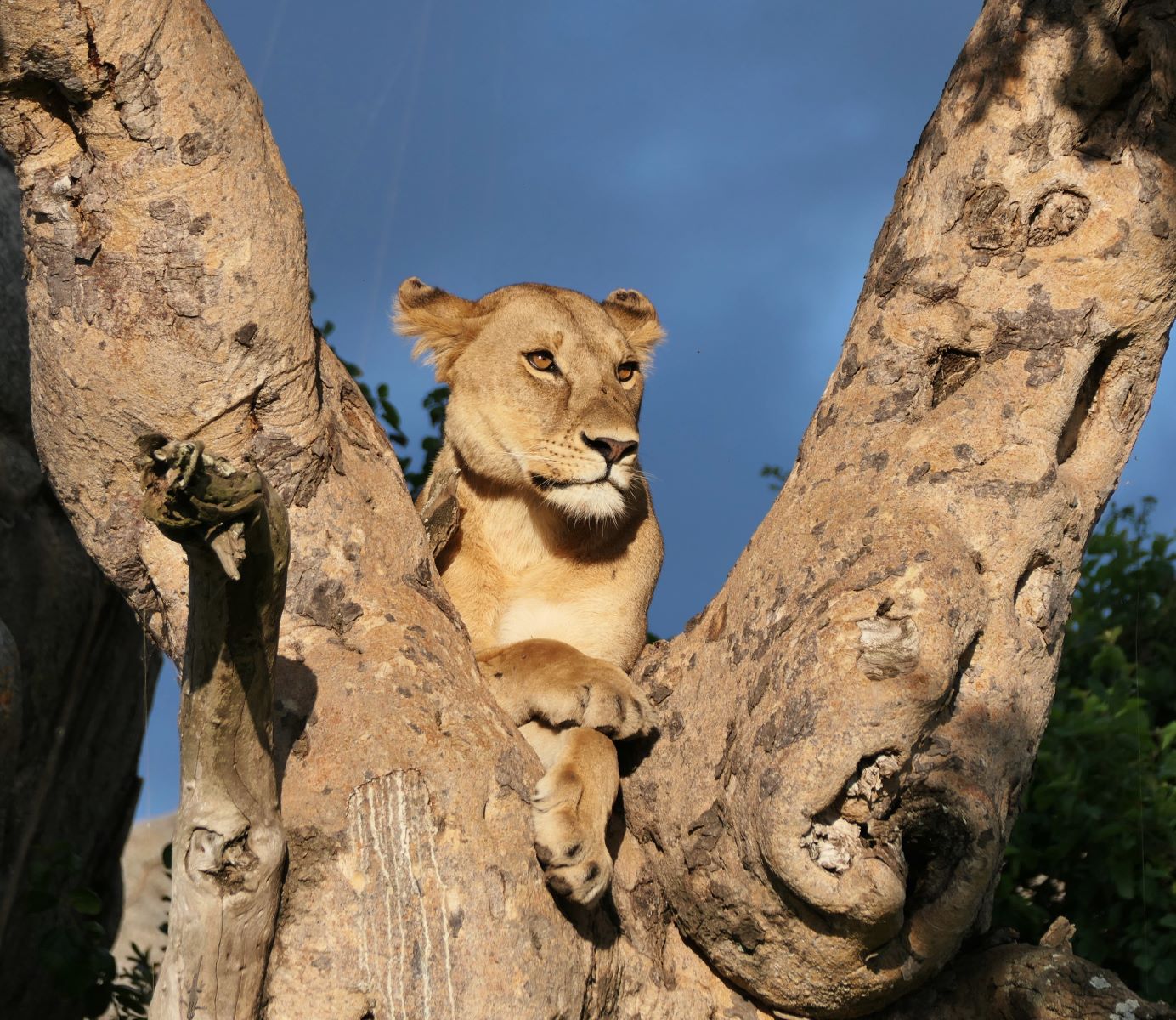
Common Sense Tip: It’s best if you figure out how to use your camera before your trip! I neglected to do this. As a result, I have about 200 photos of a beautiful blade of grass, with a blurry animal standing behind it. Fortunately, there were several professional photographers on our safari, who gave me some great photography tips. I’m thrilled with the quality of some of the photos I was able to capture: they are of a far better quality than what I could take on my cell phone!
On my to-do list: take a photography class, buy a telephoto lens, and return to Africa.
Additional Photography Equipment
- Camera Bag – you need a good bag to protect your camera while traveling. I added some extra protection by spraying it with the waterproofing spray that I use on my boots.
- Tripod – Serious photographers will want a light-weight tripod for high quality videos
- Lens Wipes – For sure: have plenty of lens wipes! Dusty lenses just won’t do. Wiping down my camera was a nightly ritual while we were in Tanzania. Not only did I use wipes for my Panasonic camera, but for our binoculars, cell phones and sunglasses as well. Zeiss Pre-Moistened Lens Cleaning Wipes are my go-to lens cleaners. They are specifically designed for lenses and it’s easy to carry one or two along each day in the jeep. ( a fellow traveler was using a microfiber cloth instead, and one afternoon it became completely dust-filled and therefore useless)
- Memory Cards– be sure to bring an extra memory card or two, especially if you plan on taking a lot of videos.
- Spare Batteries and a Battery Charger: Don’t risk losing battery power just as you finally spot that elusive leopard!
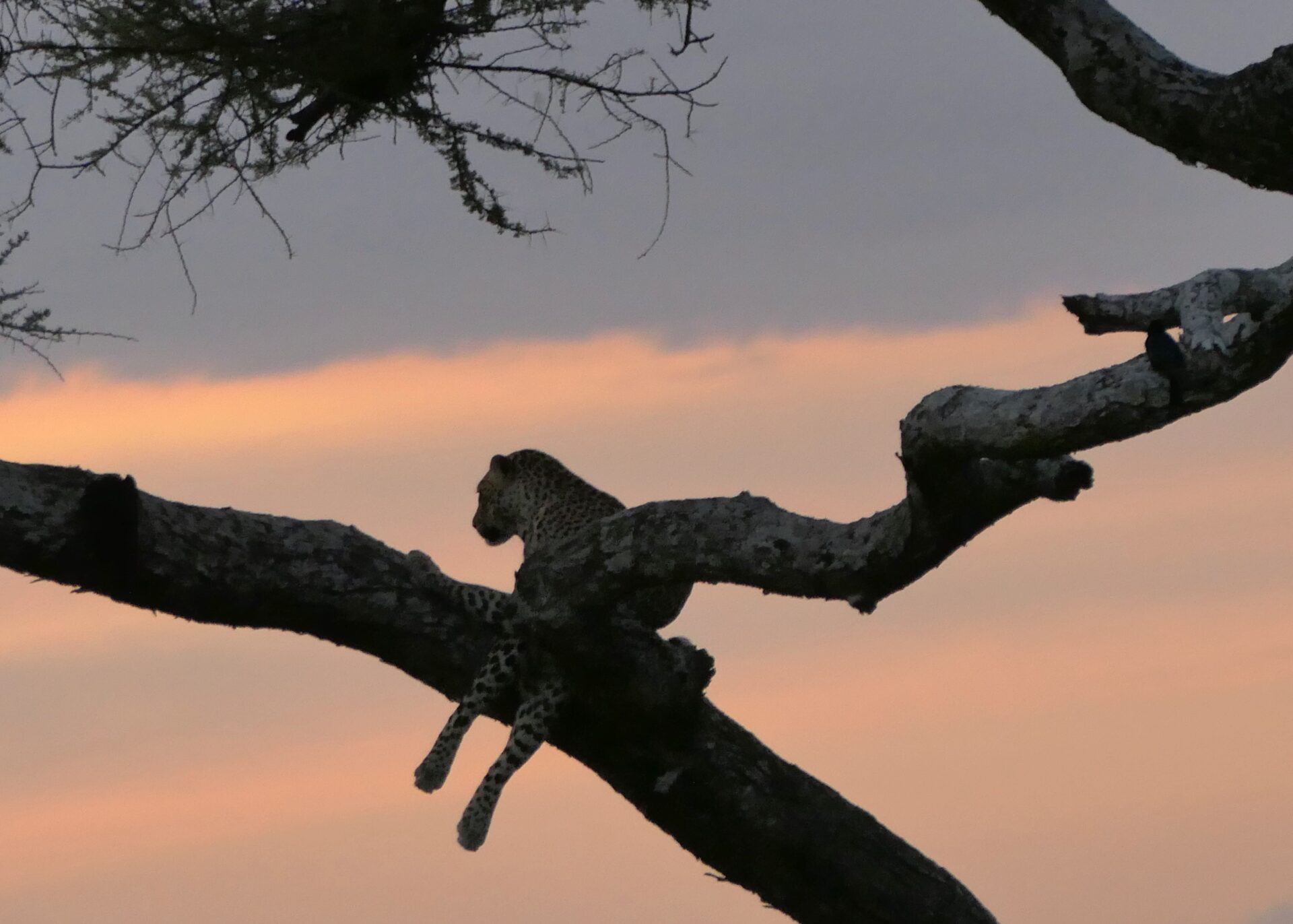
Binoculars
Another important investment for your trip is a good set of binoculars. You will use them constantly! A magnification of 8x or 10 x is recommended. With anything less than that, you won’t be able to see all of the details of the wildlife you are viewing.
Bushnell Engage 10x Binoculars are lightweight and water resistant, while providing excellent magnification.
Without a good set of binoculars, you might never notice the Oxpecker searching for ticks and other parasites on this giraffe.
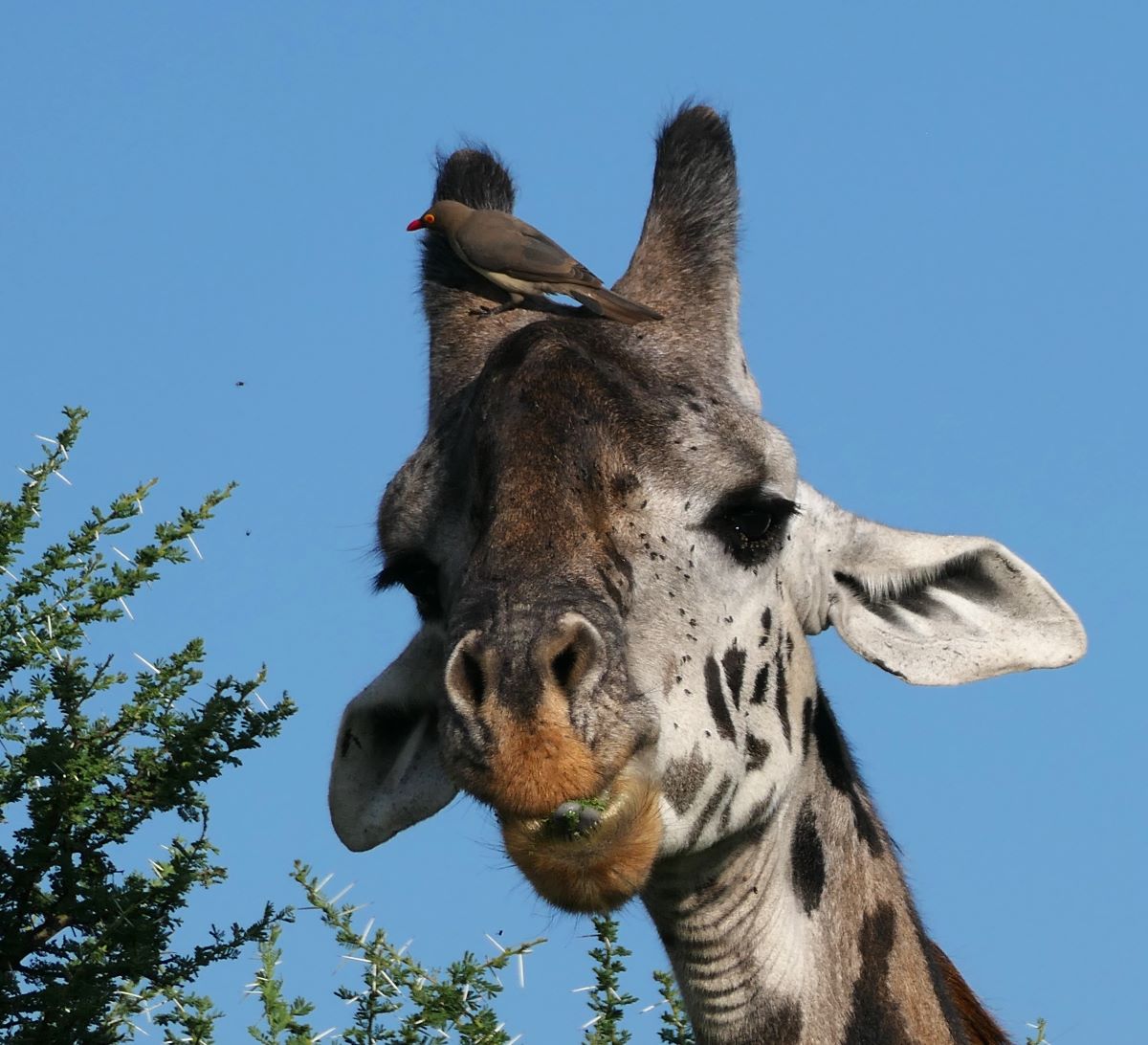
Universal Travel Adapter
You’ll need a travel plug adapter to charge your cell phones, laptops, and camera chargers. In Tanzania, we used plug type G, which is the plug with two flat parallel pins and a grounding pin. We’ve long used a worldwide plug adapter set that has multiple of plugs, including the Type G we needed for our safari.
The Bestek Universal Travel Adapter has a direct US plug and four adapters. It can be used throughout Europe, Asia, South America and Africa.
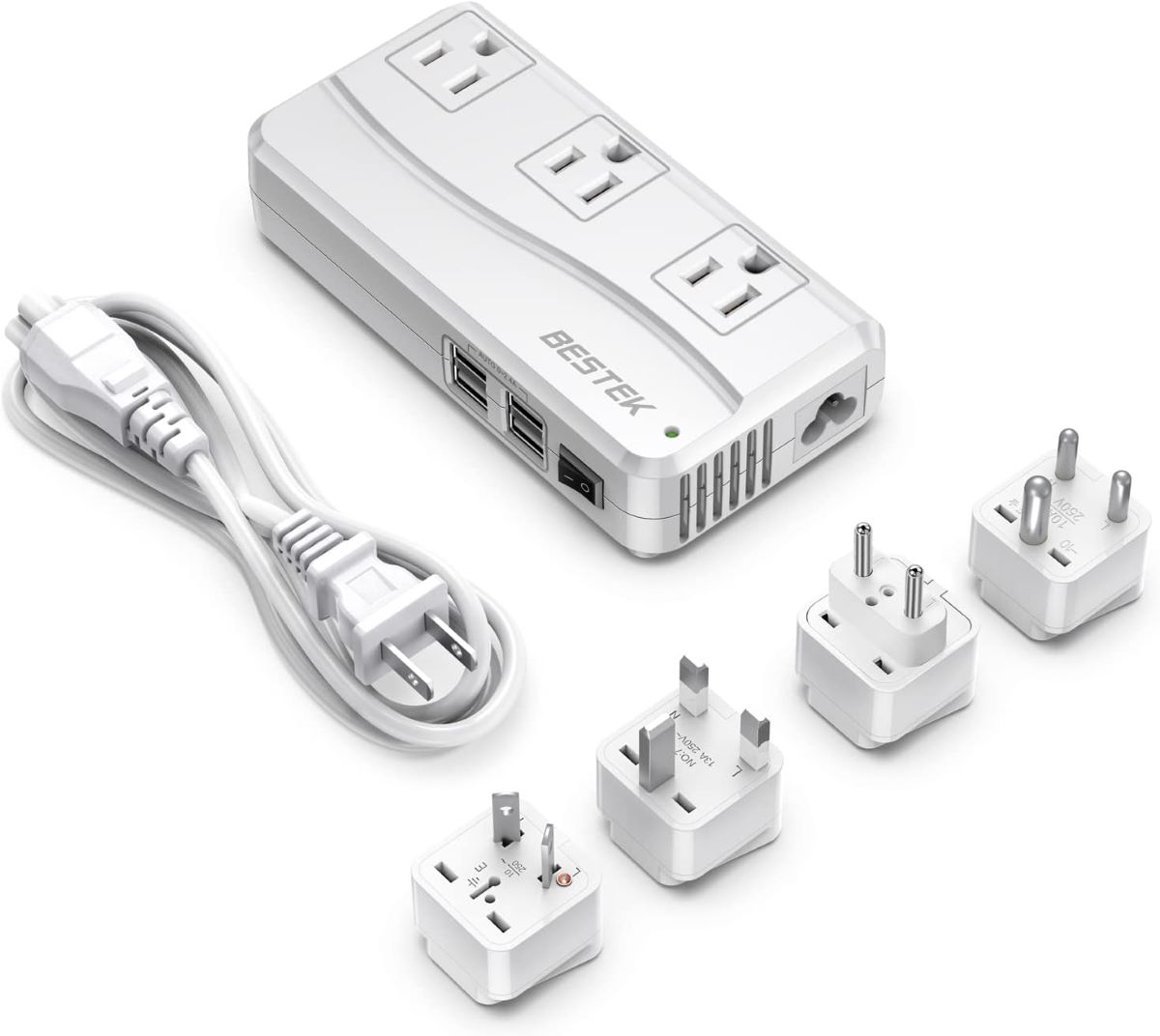
Insect Protection: A Must For An African Safari!
Insect protection is vital during an African safari due to the presence of several biting insects that can transmit diseases and cause discomfort. Think mosquitoes, tsetse flies, and ticks.
As mentioned earlier, it is important to wear long-sleeved shirts and long pants in areas where insect are active, especially in the early morning and evening.
Check yourself regularly for ticks, especially after walking through grassy or wooded areas. Remove ticks using fine-tipped tweezers and clean the area thoroughly.
Insect repellent alone is not particularly effective against Tsetse flies. Tsetse flies can transmit sleeping sickness. While this disease is no longer as common as it used to be, the tsetse still delivers a stinging bite. This is why we chose to wear our insect repellent clothing (long-sleeved shirt, long pants, socks and buff) in areas where our guides knew that the tsetse flies were prolific, particularly in Tarangire National Park.
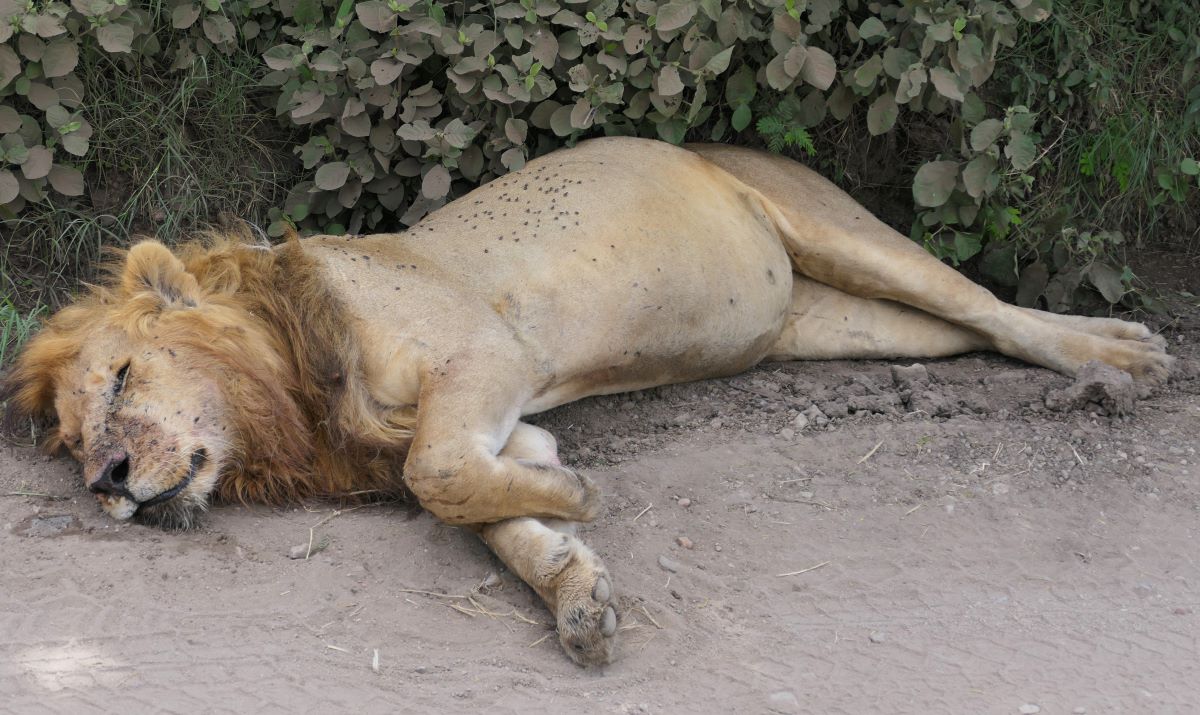
Insect Repellent
Good insect repellent containing DEET or or picaridin is a must for your African Safari. Concentrations of DEET higher than 30% aren’t necessary. While a higher concentration may affect how long the repellent lasts, it doesn’t offer more protection from bites, and therefore isn’t worth the added toxicity of higher dosages. We purchased repellent that is 30% DEET, and it worked especially well for protection from mosquitoes.
Carrying liquids can be tricky on airplanes. Avoid this hassle by carrying Insect Repellent Wipes.
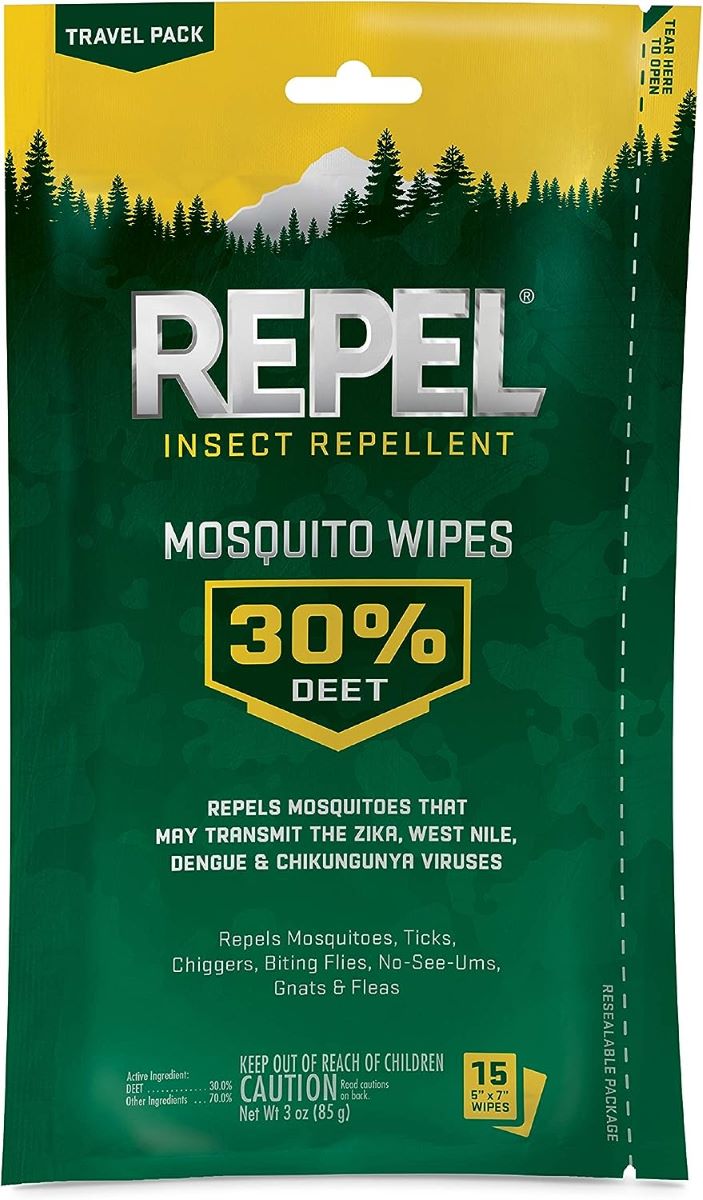
Pro Tip: It is not advised to buy one product containing both sunscreen and insect repellent. Apply sunscreen first, wait for at least 10 minutes for the sunscreen to get absorbed, and then apply the insect repellent. Sunscreen can be reapplied later in the day, but repellent containing DEET should only be applied once.
Another option is to consider treating clothes with permethrin, an anti-parasite medication. This works particularly well against ticks. Clothing can be sprayed before leaving home. Read all instructions carefully before use. Keep track of which clothing items have been sprayed with permethrin, and pack them separately from your other clothing. Treated clothing will remain effective through several washings. Sawyer Premium Permethrin Insect Repellent is a great brand if you decide to go this route.
Alternatively, it’s possible to send your clothes away to a company that will treat them with permethrin for you.
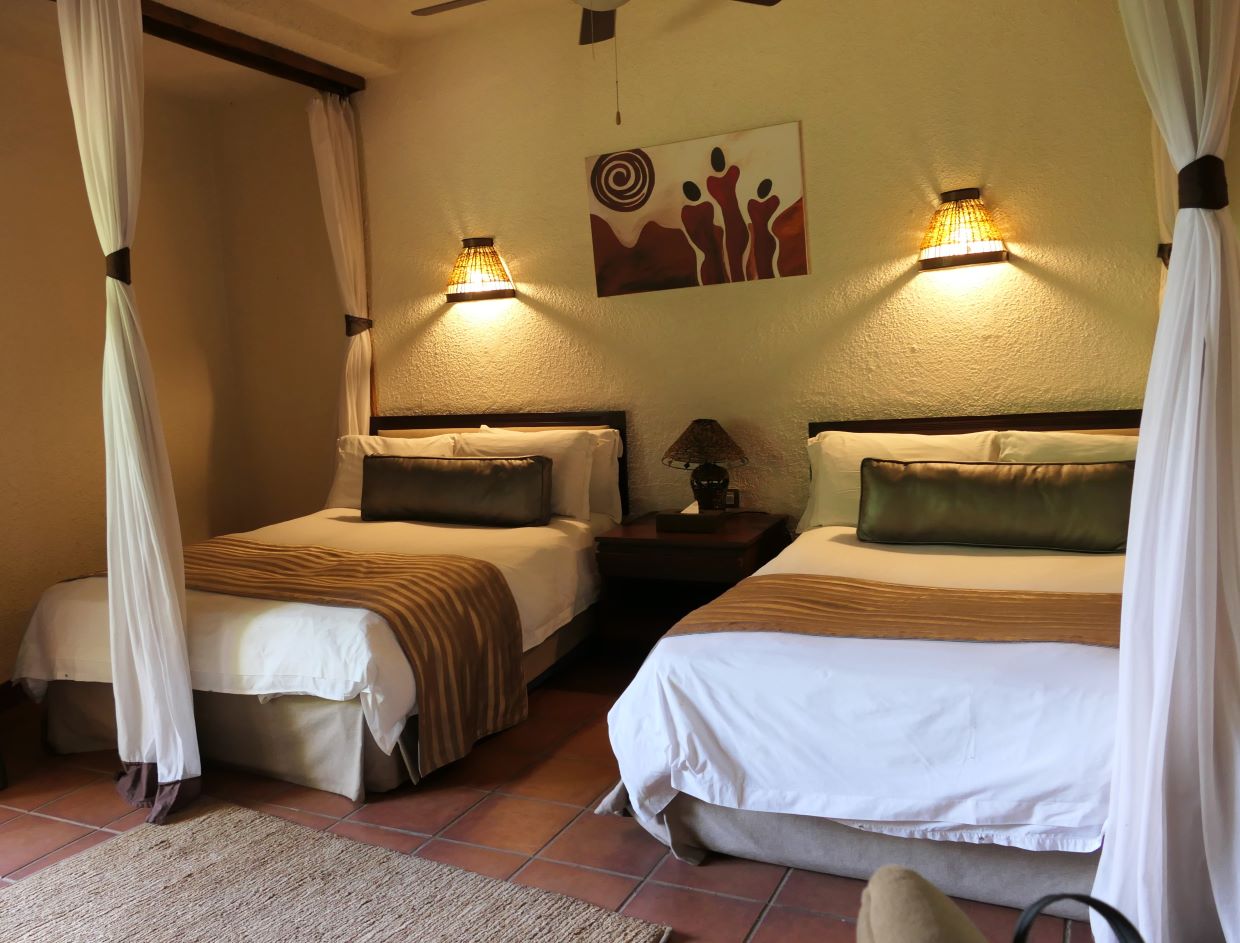
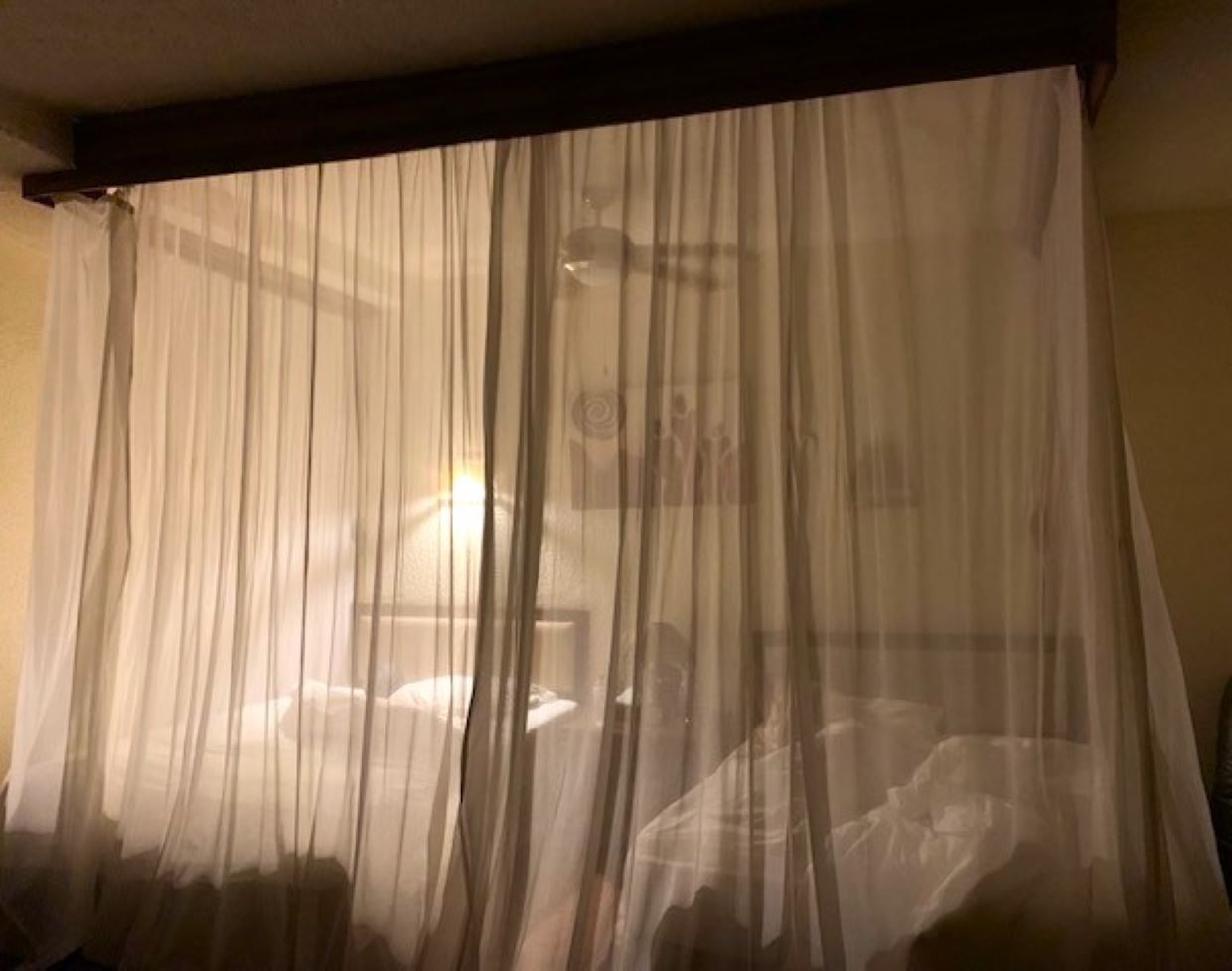
Malaria Medication For Mosquitoes
Mosquitoes can transmit several diseases, including malaria. The risk of contracting malaria is highest in hot, humid areas, and lowest during the dry months of June through September. Even though the risk may be low during the peak tourist season, taking preventative malaria pills is highly recommended.
You’ll need to see your doctor in order to get a prescription. Begin the medication a day or two before arrival in Africa, daily during your trip, and for seven days after leaving Africa. It is recommended to take the medication with food.
Neither David or I experienced nausea or any other side effects form the malaria medication. We took ours with breakfast, as the pills can keep people awake at night.
Others on our tour did feel some nausea. They opted to take their pill with dinner, rather than first thing in the morning before setting out on a possibly bumpy jeep ride.
Mosquitoes are most active at dawn and dusk, so try to minimize exposure during these times. All of the lodges where we stayed had screened doors and windows to help keep insects out. Do be careful not to keep exterior doors propped open.
There was also mosquito netting around our beds that we untied when we went to bed. The one exception on our tour was the Ngorongoro Serena Safari Hotel, where the altitude is too high for mosquitoes.
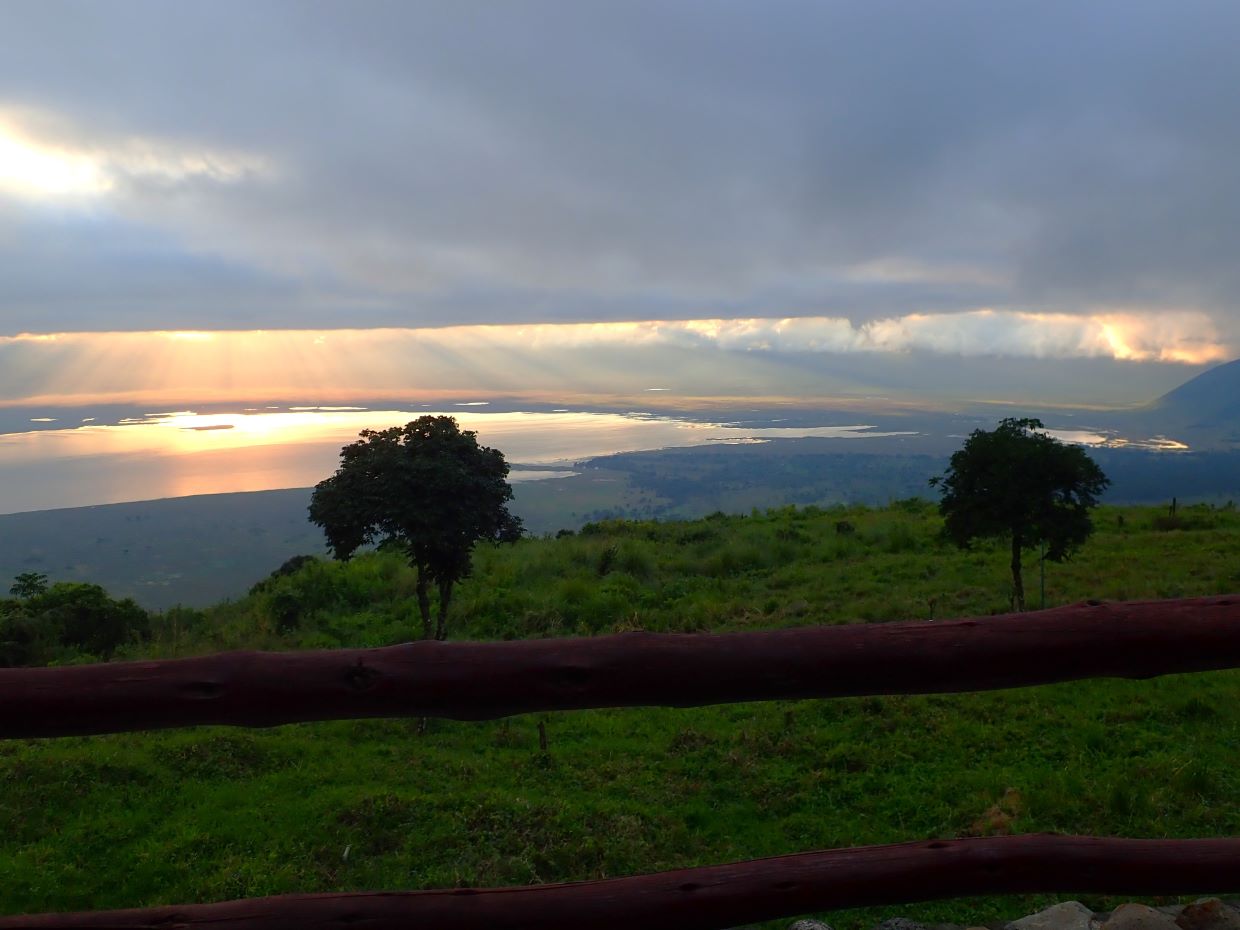
Follow these simple precautions to reduce your chances of getting an insect-borne disease, and enhance your safari experience.
Personal Care Items To Pack For An African Safari
Sunscreen
It is imperative to have a high quality sunscreen for the strong African sun. Our personal favorite is Neutrogena Ultra Sheer Sunscreen Lotion with Broad Spectrum SPF 70. It’s both non-greasy and water resistant.
Lip Balm With SPF Protection
This Aquaphor Lip Repair Lip Balm with Sunscreen is perfect for the sunny and dusty conditions you’ll encounter along the way.
Eye Drops
African safaris often involve dusty roads and open fields, which can lead to particles irritating your eyes. Plus long days in the sun can lead to dryness. Be prepared with good eye drops that can provide relief from irritation.
A fellow traveler introduced me to Refresh Optive Advanced Lubricant Eye Drops. They gave me more of a sense of lubrication and feeling refreshed than the eye drops I typically carry. While I’m not big on single-use products when I’m at home, these tiny vials were so easy to carry and use while out on game drives.

Wet Wipes
It’s great to have a travel pack of wet wipes stowed in your day pack. I really like Dude Wipes, which are made with eucalyptus and mint. While they are designed to be flushable bathroom wipes, I often used them as hand wipes.
As far as bathrooms go, I stuck with toilet paper whenever possible, as I wasn’t quite sure if sewer systems in Africa can actually handle flushable wipes. Most days on safari we were able to make regular stops at restrooms. However, there were two instances on our nine day safari where we were on the open savannah with no facilities in sight.
The euphemism for this was “I’m ready to go out the back door.” Which meant going to the bathroom behind the jeep. And in these two moments I was happy to have the flushable wipes!
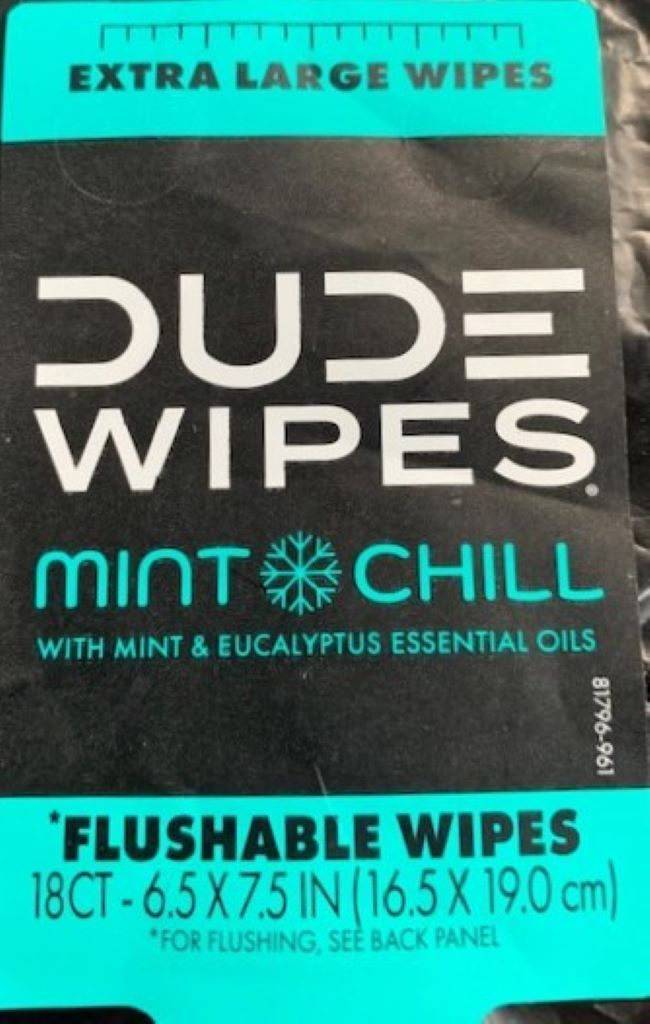
Pro tip: Consider taking a bit of toilet paper with you each morning as you set out for the day. It comes in handy if you need a tissue, or if you use a restroom where toilet paper isn’t available: a not uncommon occurrence for us.
Hair Conditioner
All of the places where we stayed provided shampoo and body wash in the shower. About half of our accommodations also supplied hair conditioner. So if conditioner is important to you, carry some along.
Wash Cloth
Most of our accommodations did supply wash clothes. A few did not, so I was happy to have brought one along.
Ear Plugs
I’ve tried several kinds of ear plugs over the years, and have settled on Mack’s Silicone Putty Earplugs as my favorite. They are very moldable, and can easier be worn for or five times before being traded out for a new pair. They’re great for sleeping on a plane, in a noisy hotel room or in a tent with animal noises all around! I have small ears, so I use the child-size Mack’s earplugs: they are far more comfortable for me than larger pairs. And nothing beats high quality sleep!
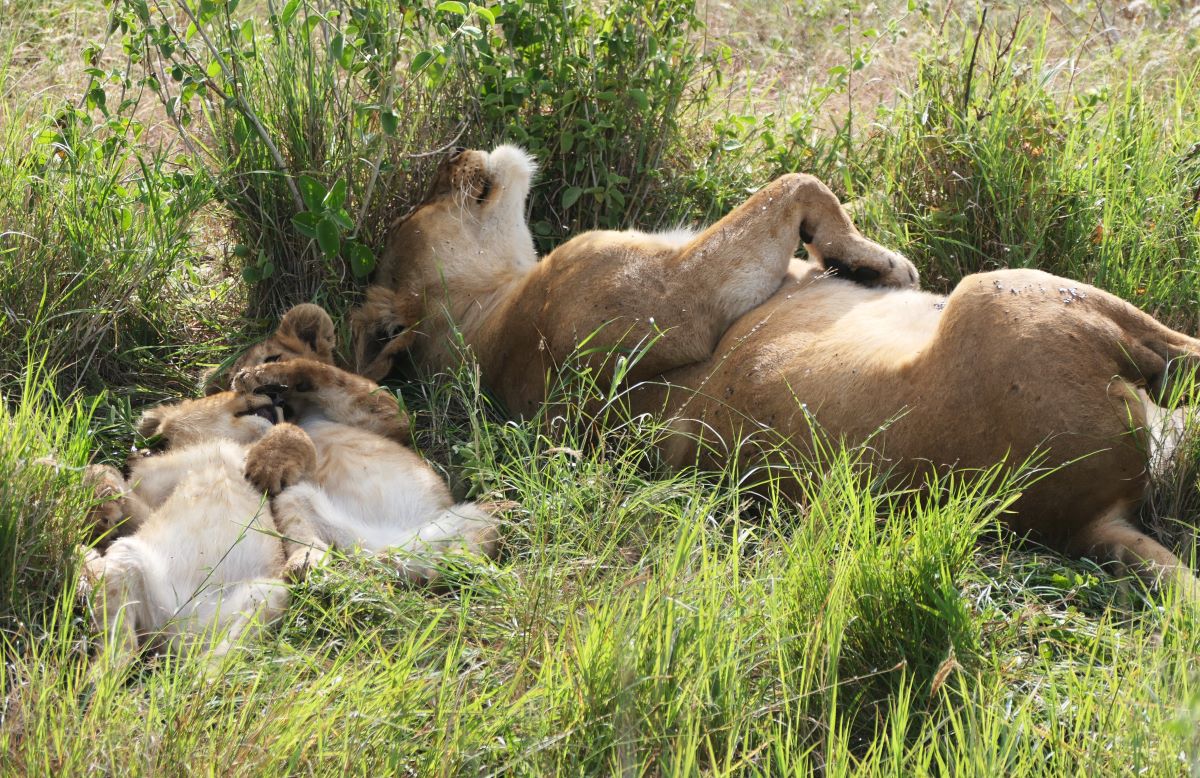
Contact Lens
Contact lens wearers might want to bring along a pair of prescription glasses in case your eyes become irritated from dust. Bring extra pairs of disposable contacts if you wear them, as well extra solution to wash the dust off of your fingers before inserting them.
Above all, pack your extra contacts and solution in your carry on bag. One woman at our hotel packed her contacts in her checked bag. I met her on day five of her trip, and her checked bag still hadn’t shown up.
Personal Medication
Be sure to pack any prescriptions that you made need in your carry-on. We can’t emphasize enough that baggage delays do happen, so don’t take the risk of packing medication in checked luggage.
You most definitely will spend time bouncing around in the back of a jeep, so plan ahead if you tend to experience motion sickness. Consider Advanced Herbals Motion Sickness Non-Drowsy Capsules From Dramamine.
Think ahead if you are traveling to areas of higher elevation and you are susceptible to altitude sickness. Two members of our group felt uncomfortable when we were staying along the rim of the Ngorongoro Crater, at an altitude of 7,546 feet.
Personal Toiletries
Of course, include personal toiletries such as your toothbrush and toothpaste, brush or comb, hair ties, a razor, nail clippers and deodorant.
First Aid Kit
Your tour operator will most likely be carrying a first aid kit. However, I always carry a small first aid kit with me when I travel to another country. You never know when you’re going to decide you need something in the middle of the night!
Here is my go-list:
- Imodium for traveler’s diarrhea. Muscle memory is strong, and it’s so easy to automatically rinse your toothbrush with tap water or have a drink with ice in it. Additionally, it’s advised to avoid fresh produce unless it is something that is peeled, such as an avocado or watermelon. Some hotels have lavish buffet spreads, and it can be so tempting to indulge in a leafy salad or fresh tomatoes. All of these situations can create bathroom issues. Yep: a couple of people on our tour needed Imodium.
- Cortisone cream for insect bites
- Neosporin or other antibiotic cream for cuts or scratches
- Pain reliever such as aspirin, Advil (Ibuprofen) or Tylenol (Acetaminophen)
- Benadryl or other antihistamine
- Decongestant
- An assortment of Band-Aids
- Alcohol Wipes
- Prescribed malaria medication
- Motion sickness or altitude sickness medication if these issues apply to you
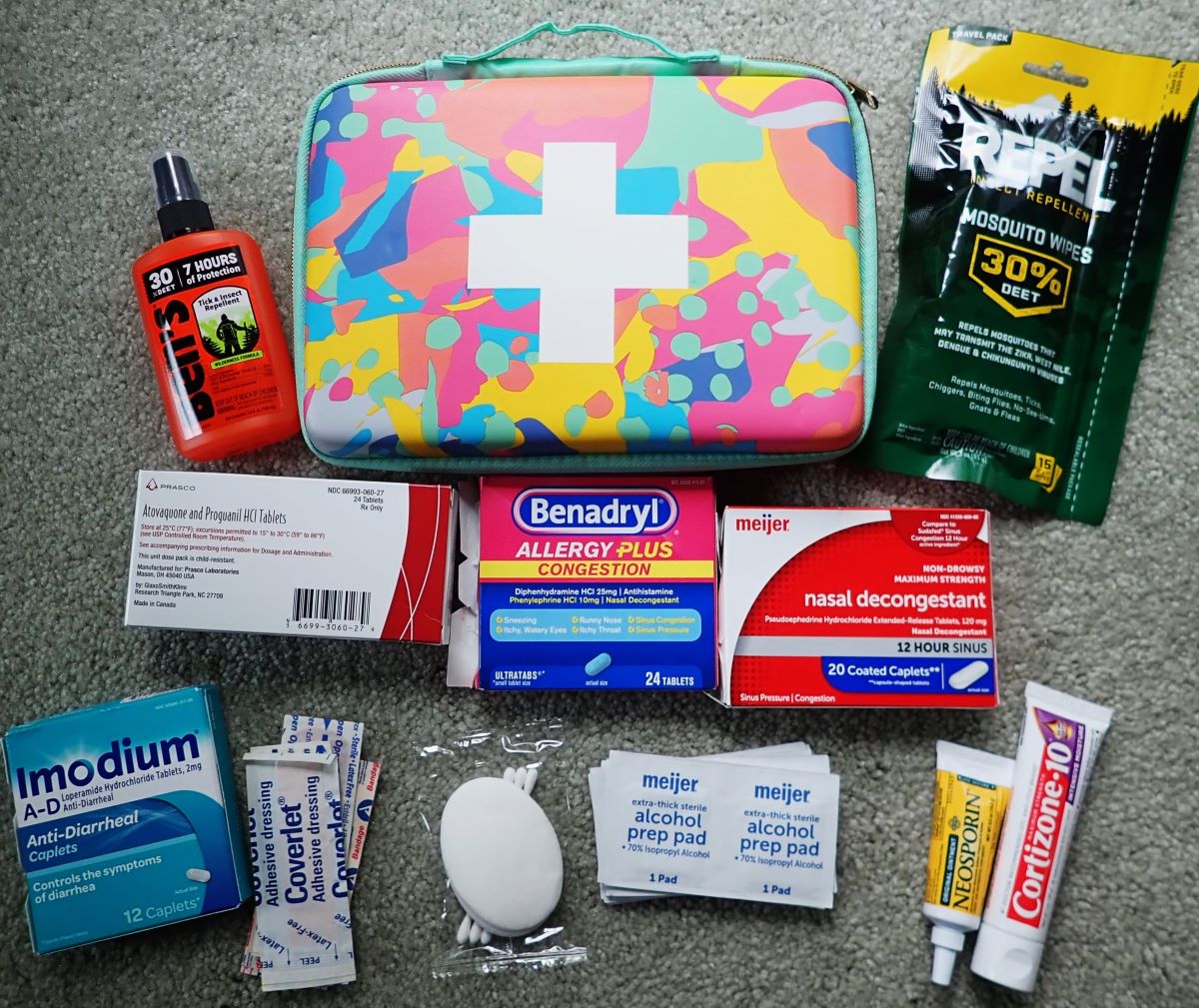
Packing Tips For The Plane
Necessary Items In Your Carry On
Make sure that your necessary travel papers, cash, and credit cards are readily available in your carry-on bag.
- Passport – Your passport must be valid for six months after the date of your exit from Africa, and must have at least two plank pages inside. It’s also a good idea to carry a copy of your passport separate from your passport itself, in case you lose your passport
- Airline Tickets
- Tourist Visa – David and I obtained ours online ahead of time. (While it’s possible to get your tourist visa upon arrival at the airport, you won’t want to wait in line after such a long trip!) You can check here to see if your country requires a tourist visa.
- Personal Health Insurance Card
- Travel Insurance Papers – Unfortunately, sometimes things go wrong when you travel. Travel insurance can offer coverage for trip cancellation, flight delays, lost luggage, and medical expenses. We felt that emergency evacuation coverage was especially important for our trip to Africa.
- Cash – It is recommended to bring small bills in good condition. We used a travel credit card for almost all of our purchases. The only cash we needed was single dollar bills for tipping attendants in restrooms.
- Credit Card – It is easy to pay for things with credit cards. We recommend a travel card such as the Chase Sapphire Preferred, which does not charge fees for international purchases. Upgrade to the Chase Sapphire Reserve for extra travel insurance and access to the lounge at the Kilimanjaro airport. We loved hitting the buffet while waiting for our flight home!
- Travel Plan List – Have a copy of your travel itinerary, including flight information, ground transportation and accommodations in case you are questioned by border security
- Vaccination Certificate – Some African countries require proof of vaccination for Yellow Fever and Hepatitis A. (In Tanzania, these were recommended, not required, unless you are coming from a country where Yellow Fever is a concern)
TSA Approved Luggage Locks
It’s essential to have a good luggage lock when you travel. It can deter thieves from rooting around in your suitcase, whether in the airport, on a bus or in your hotel room. We always travel with TSA approved luggage locks. TSA agents have a universal master key that fits into the bottom of all approved locks. If your bag is selected for screening, they can get into it without having to break your lock or cut into your suitcase in order to do it.
We purchased three digit combination locks so that we wouldn’t have to worry about keeping track of a physical key. We highly recommend them, as long as you don’t forget your combination! They’re great for both carry-on and checked suitcases, backpacks, briefcases and even gym lockers.
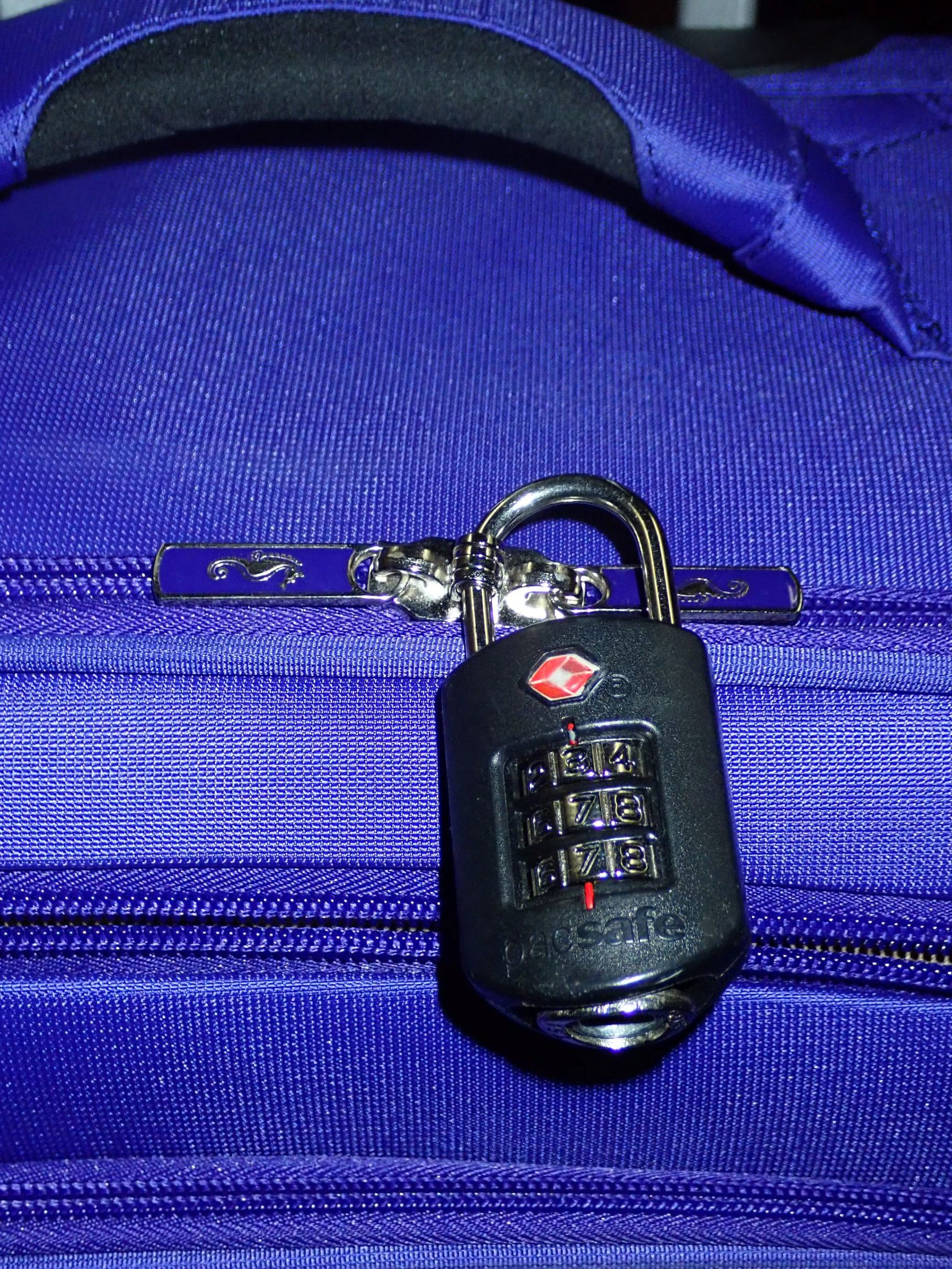
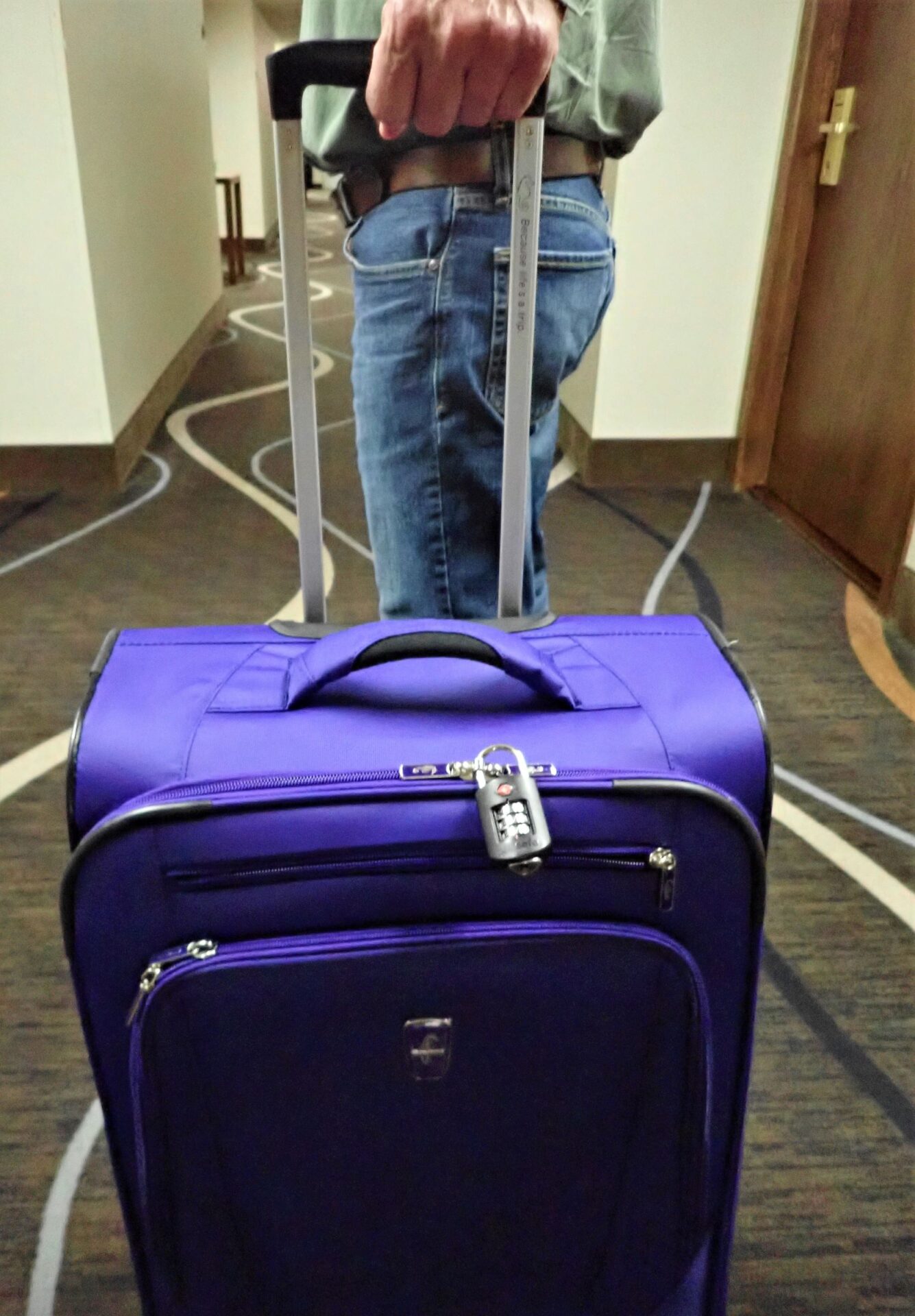
Luggage Tags
Many tour operators may provide you with company luggage tags to assist with airport transfers. If not, these Kevancho Leather Luggage Tags are a great option. They are durable, and have a privacy flap with a flap button closure, to fully hide your personal information. The tags come in a variety of colors, which makes it easier to pick out your bags in the baggage claim.
Apple Air Tags
An Apple Air Tag is a device about the size of a quarter that sends out a Bluetooth signal that is picked up and relayed through other Apple devices. It’s a great way to keep track of your stuff. We have friends who attach them to their key rings, and others who attach them to the collar of the family dog or cat.
We only use our Air tags to keep track of our luggage when we travel. Connect it to your iPhone to see where your bag is in real time. (Air Tags don’t work with Android phones)
We were so glad we had one when our checked bag didn’t show up at the Kilimanjaro airport! We were able to see that our bag was spending some extra time at the airport in Amsterdam, and we were able to provide this information at the service counter when we reported our lost luggage.
Place your Apple Air Tag inside of your checked bag, preferably one with a lock on it to avoid theft.
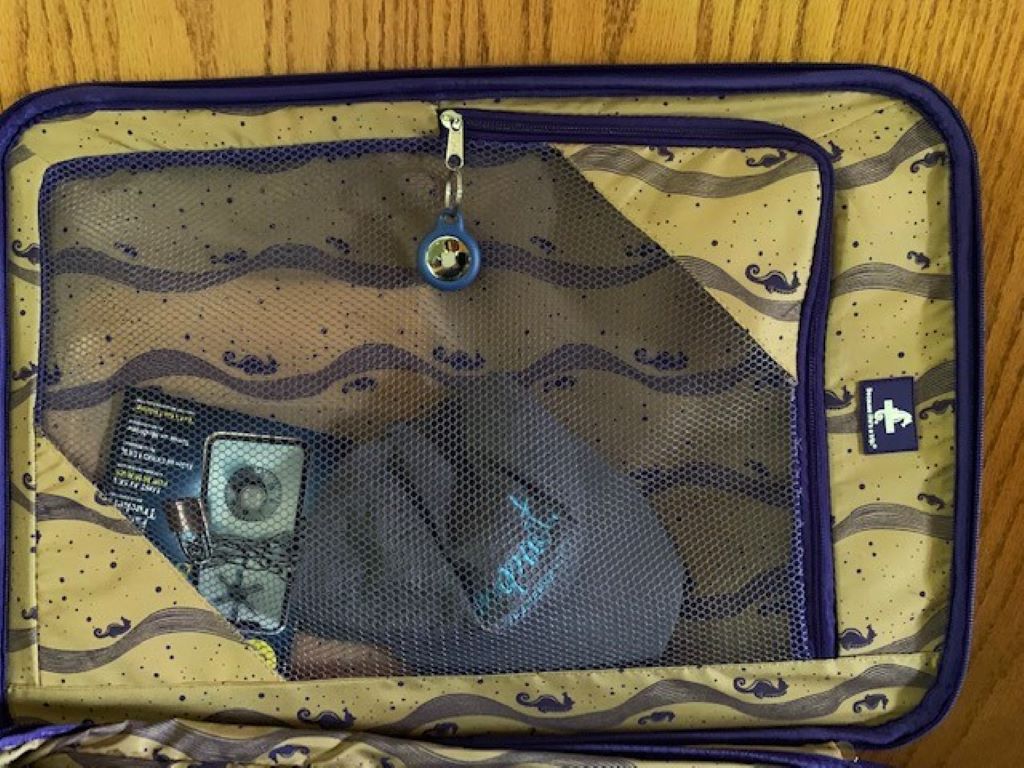
Packing Cubes
Packing for a trip became much more efficient once we invested in a set of packing cubes. Packing cubes are like drawers for your luggage! They are zip containers that organize your belongings and fit right inside your suitcase. They help compress clothing, therefore saving space in your luggage. They also keep clothing from shifting around during transit, resulting in fewer wrinkles.
Packing cubes also help you stay organized once you’ve reached your destination. Separating similar items into cubes keeps you from having to rummage through your entire suitcase when looking for a particular item. The cubes can go right into a hotel drawer without unpacking. The zippers that go around the top of the cube make it convenient to access your items.
I love this my piece set by TravelWise. The mesh design allows you see what’s inside. Not only does it make it easy for you to locate your favorite pair of shorts, it helps security travel agents check out your luggage without pawing through all of your loose clothing.
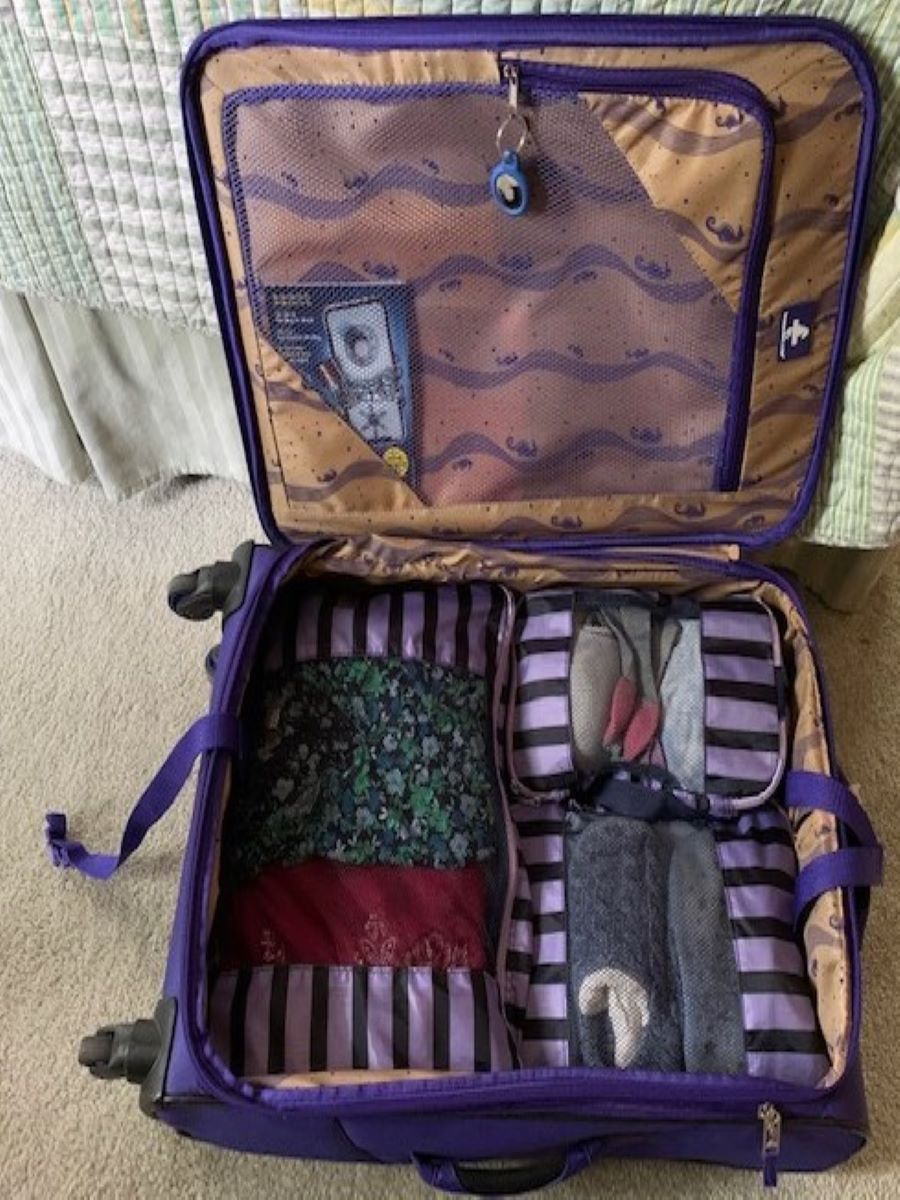
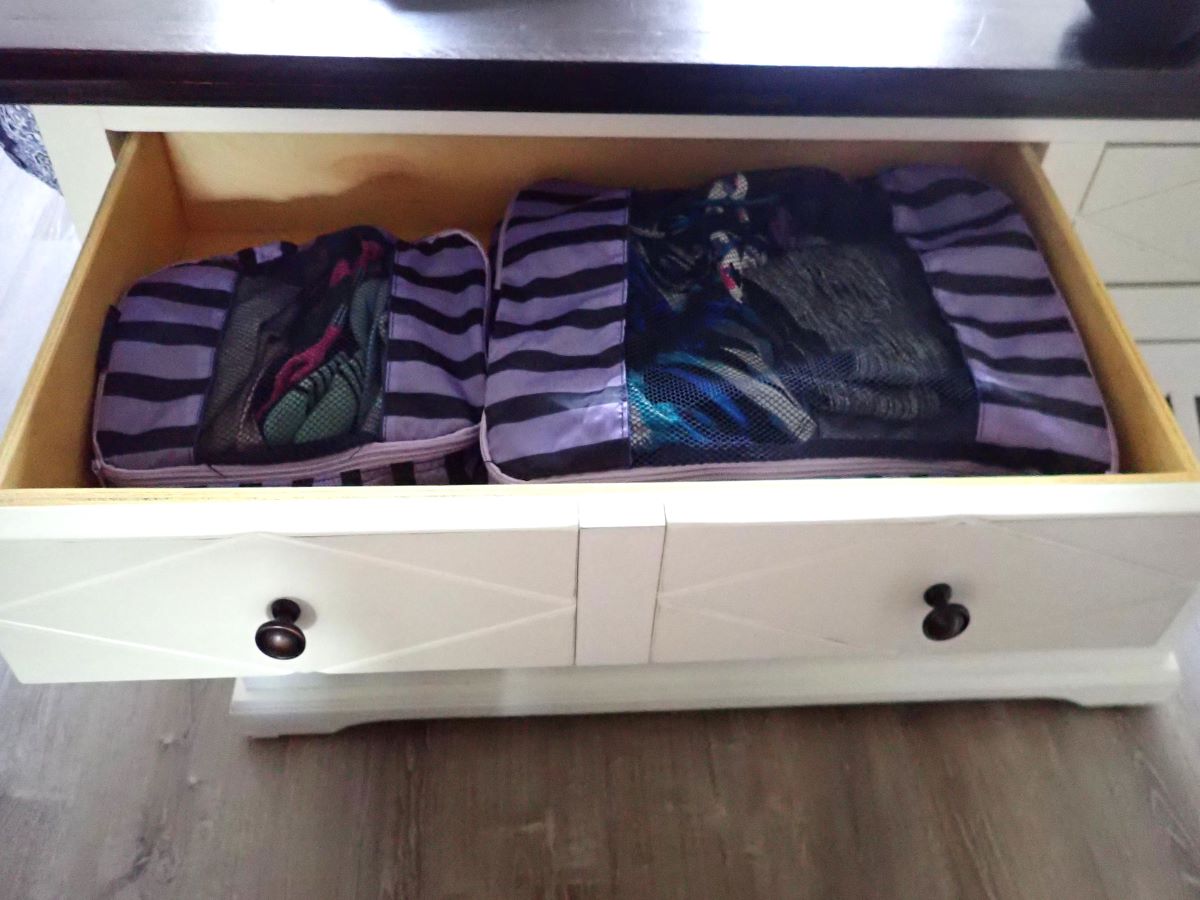
Anti-theft Travel Purse
Years ago, while in Las Vegas, a thief expertly cut the strap of my purse and made off with it without me even realizing it. I’ve never traveled without an antitheft purse since. In fact, I love my Travelon Small Anti-Theft Crossbody bag so much that it is my every day purse, not just my travel purse.
This small bag has it all: locking zippers, an anti-cut shoulder strap and slash resistant fabric. There is also RFID protection to keep personal information secure from high-tech electronic readers.
While compact this Travelon bag has plenty of room for your passport, reading glasses and cell phone. It’s a great feeling to not have to worry quite so much about pickpockets!

Travel Pillow
I have tried numerous travel pillows over the years. I finally found one that allowed me to sleep on the plane: the Cabeau Travel Neck Pillow.
I think what really makes a difference is its flat back. It allows the pillow to rest flat against the airplane seat, helping your head stead in a good alignment. There’s an adjustable strap in the front that keeps your head from jerking forward. For me, an added plus is the open neck design, which helped me avoid the feeling of claustrophobia that other neck pillows sometimes gave me.
The Cabeau travel neck pillow comes with its own earplugs and a travel bag that lets you compress the pillow down to a quarter of its size.
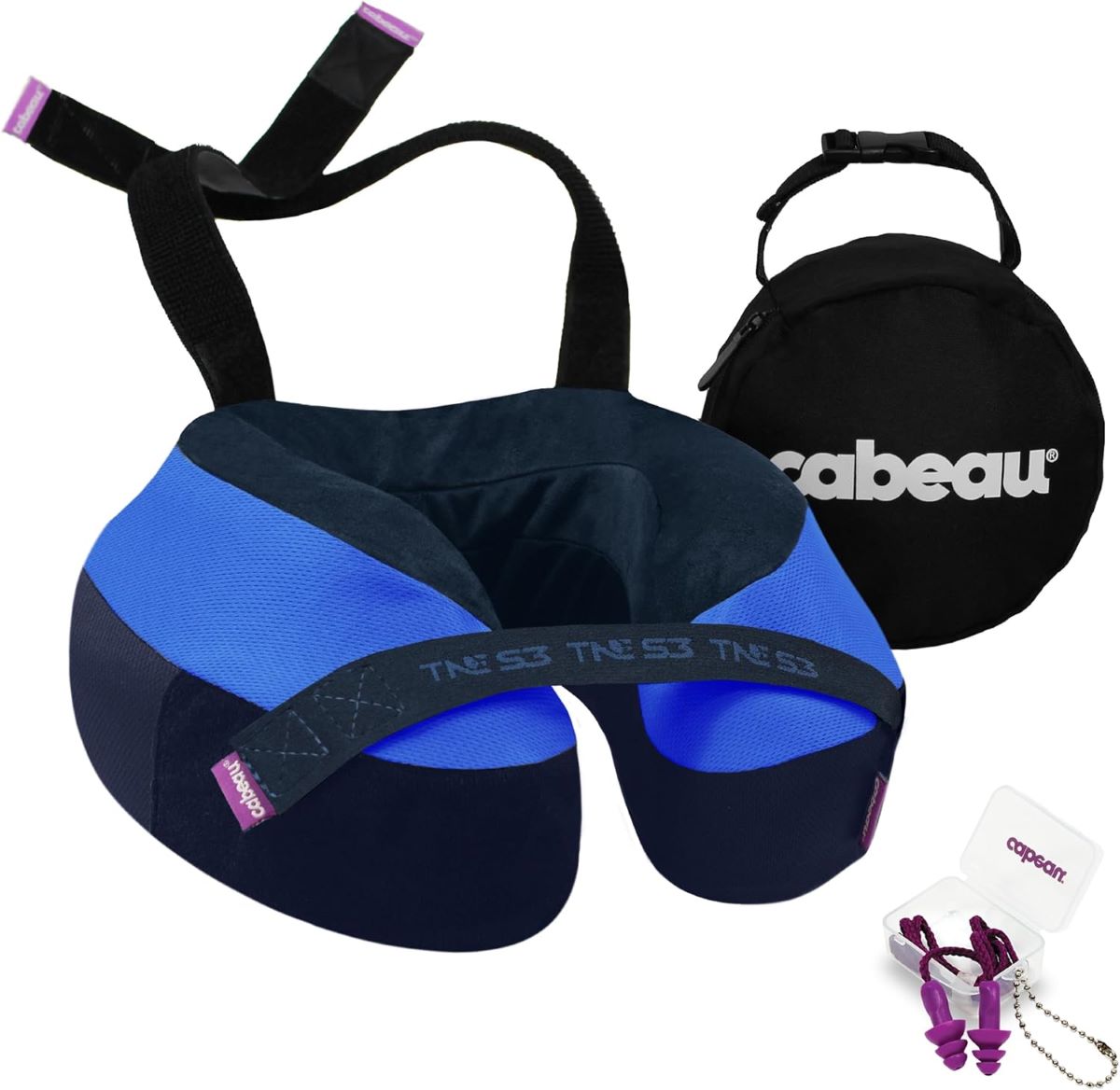
Noise Cancelling Headphones
Planes and hotels aren’t exactly known for their peace and quiet. I’ll never forget one overnight flight where the two guys behind me realized they were both die-hard soccer fans—and launched into an enthusiastic, hours-long conversation while the rest of us were trying to sleep.
That’s where noise-canceling headphones come in—they’re a total game-changer for preserving your sanity (and your sleep).
We swear by our Bose Noise Cancelling Headphones. Whether you’re looking to tune out your surroundings completely or unwind with some music, they deliver. One feature I particularly love: I can plug them right into the plane’s entertainment system and actually enjoy a movie without having to blast the volume in order to hear it over the engine noise.
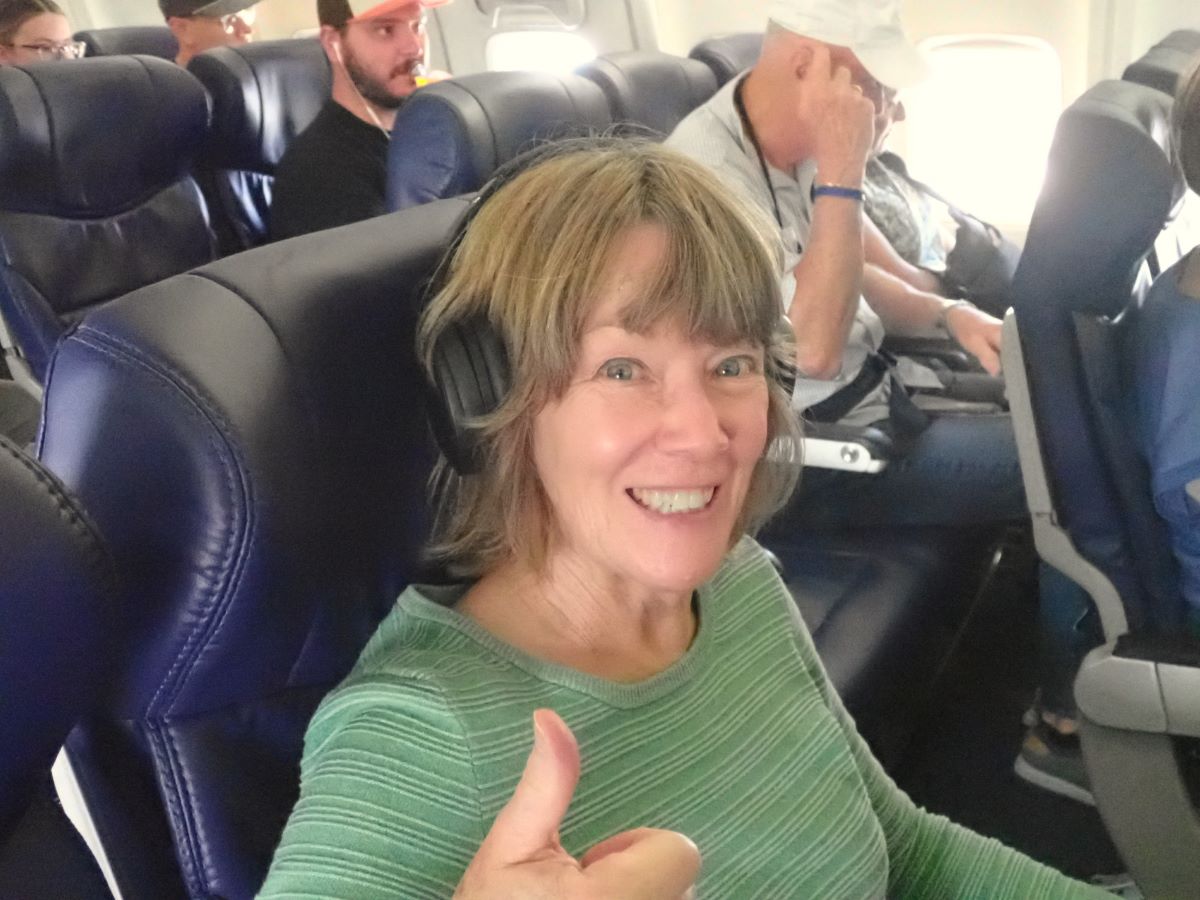
Snacks
Snacks were on the packing list for our safari. We carried enough Kind bars and packs of trail mix for two snacks each day while on Safari. We didn’t begin to realize how much food was going to be available to us at meal times. Literally every place that we went offered extensive buffets.
There were a few days where the hotel packed boxed lunches for us to eat on our way. A typical boxed lunch included some pieces of chicken, some sort of sausage or beef jerky, chips, nuts or trail mix, veggies, a muffin or cookies, bananas, an apple, and a juice box. In other words, far more than we are accustomed to eating! We hated throwing food way, so we ended up carting our uneaten lunch around with us.
We actually boarded our return flight carrying more bags of peanuts, cookies and trail mix than we started with. So definitely pack some snacks if you like something to tide you over between meals, but don’t go overboard.
Extras For Your Safari Bag If You Have Room
Here are some additional items to think about. They might not be essential, but perhaps can enhance your overall safari experience.
- Collapsible walking stick with rubber tip if you’re going on a walking safari
- A small quantity of laundry detergent sheets if you’ll be washing clothing by hand
- Headlamp or flashlight
- Quick dry travel towel
- Travel clothesline
- Travel alarm clock: many of our rooms did not have a clock and at some lodges our cell phones couldn’t get service
- Travel Journal or notebook with a pen
- Safari Field Guide: This African Safari Field guide has detailed descriptions of mammals, reptiles, birds, insects and trees
What To Leave Behind While On Safari
As mentioned earlier, you’ll want to focus on essential items as luggage space is at a premium. Wheeled luggage, hard-sided luggage and camouflage clothing are all things to leave behind. On our particular tour, our reusable water bottles also fell into that category.
Hairdryer
You might as well leave the hair dryer behind, too. With one exception, all of our accommodations provided a hair dryer. I pulled out my little travel hair dryer at the one tented camp that didn’t provide one, and promptly blew a fuse. So there’s no guarantee you’ll be able to use your hair dryer even if you do bring it.
ATM Card
Some travelers prefer to use an ATM card rather than a credit card. This may be perfectly fine for use in airports, but you can’t count on the availability of ATM machines while on safari.
Single-Use Plastic Bags
Many African countries, including Tanzania, ban single-use plastic bags. You are safe with the standard one quart zip-lock bag for liquids in your plane carry-on, as it is assumed you will carry the zip-lock back home with you.
We solved the plastic bag issue by ordering this set of 30 Piece Mesh Zipper Pouch Bags. There are multiple sizes, from small ones we used for keeping our cell phones dust-free, to large ones for separating out our dirty laundry. They also are handy for toiletries, snacks, cords, damp tooth brushes and wash clothes, wet socks and bathing suits, plus dirty sandals and boots. They are sturdy and water resistant. We highly recommend them!
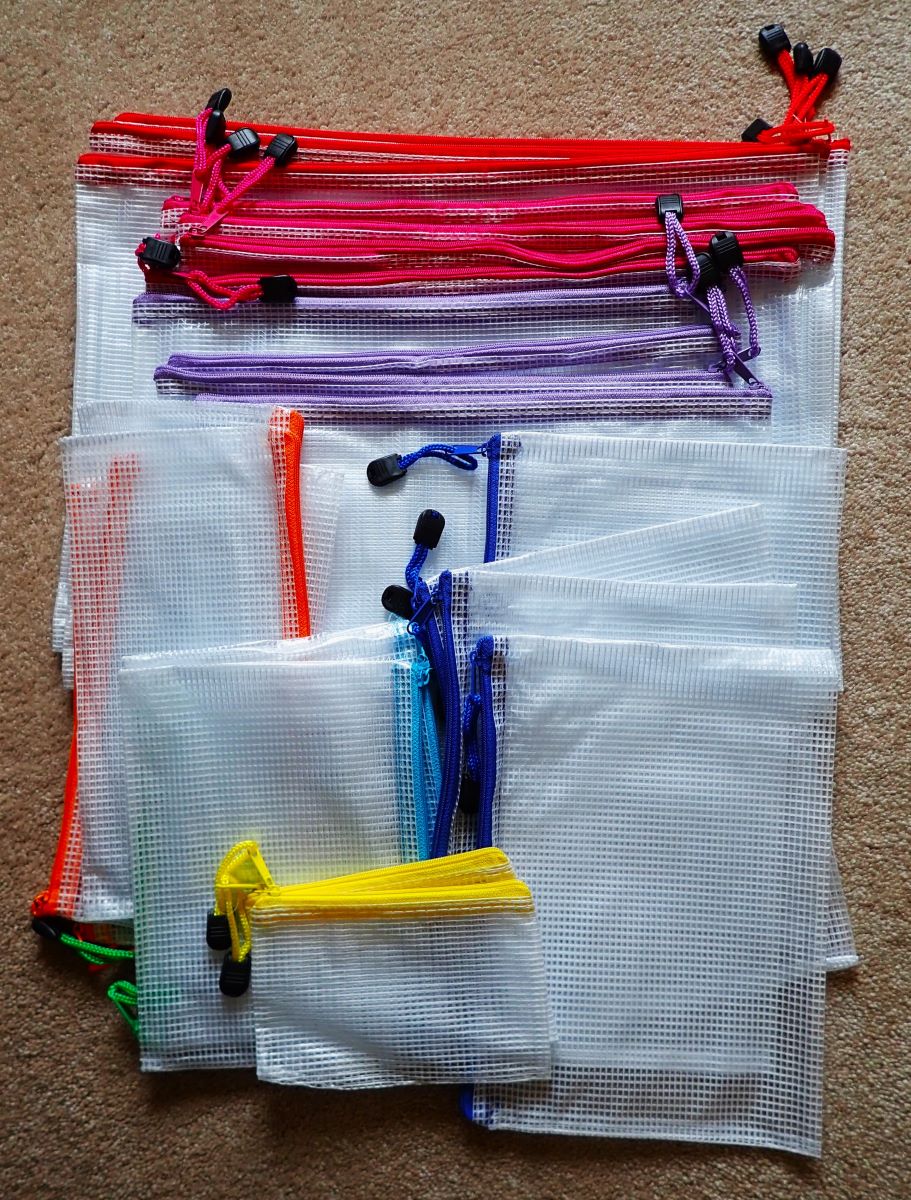
Figuring Out Where To Go On Safari
Deciding where to go on your safari can also feel overwhelming. I reached out to expert travel bloggers to find their top recommendations about where to go on safari in Africa. Their list of favorites ranges from the vast savannas of the Serengeti to gorilla trekking in the rainforests of Uganda. Whether you’re hoping to spot the Big Five or marvel at spectacular landscapes, our round-up post can guide you to an unforgettable adventure!
The Wrap-Up: What To Pack For An African Safari
And there you have it: our comprehensive guide of what to pack for an African Safari. Pack lightweight, moisture-wicking clothing in neutral colors, sturdy yet breathable footwear, and essential gear like a wide-brimmed hat, sunglasses, and a good camera and binoculars. Don’t forget sunscreen and insect repellent!
Planning A Trip? Use Our Favorite Resources!
These are sites that I use when booking a trip. If you book through my links, I may earn a commission at no extra cost to you. Thanks for supporting On To New Adventures!
Accommodations: We recommend using booking.com
Flights: We recommend WayAway
Tours And Experiences: We recommend Viator
Looking for more travel resources? Check out our Travel Resources page
The End
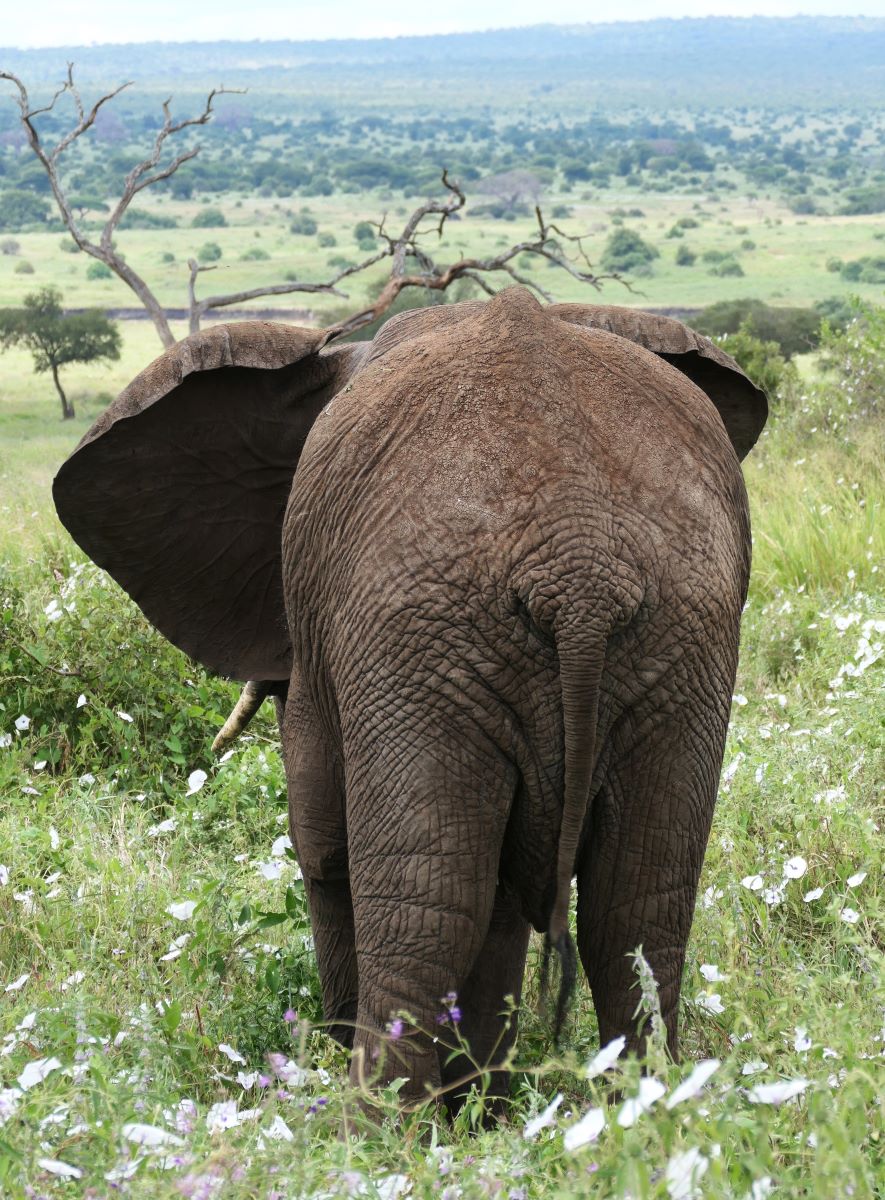
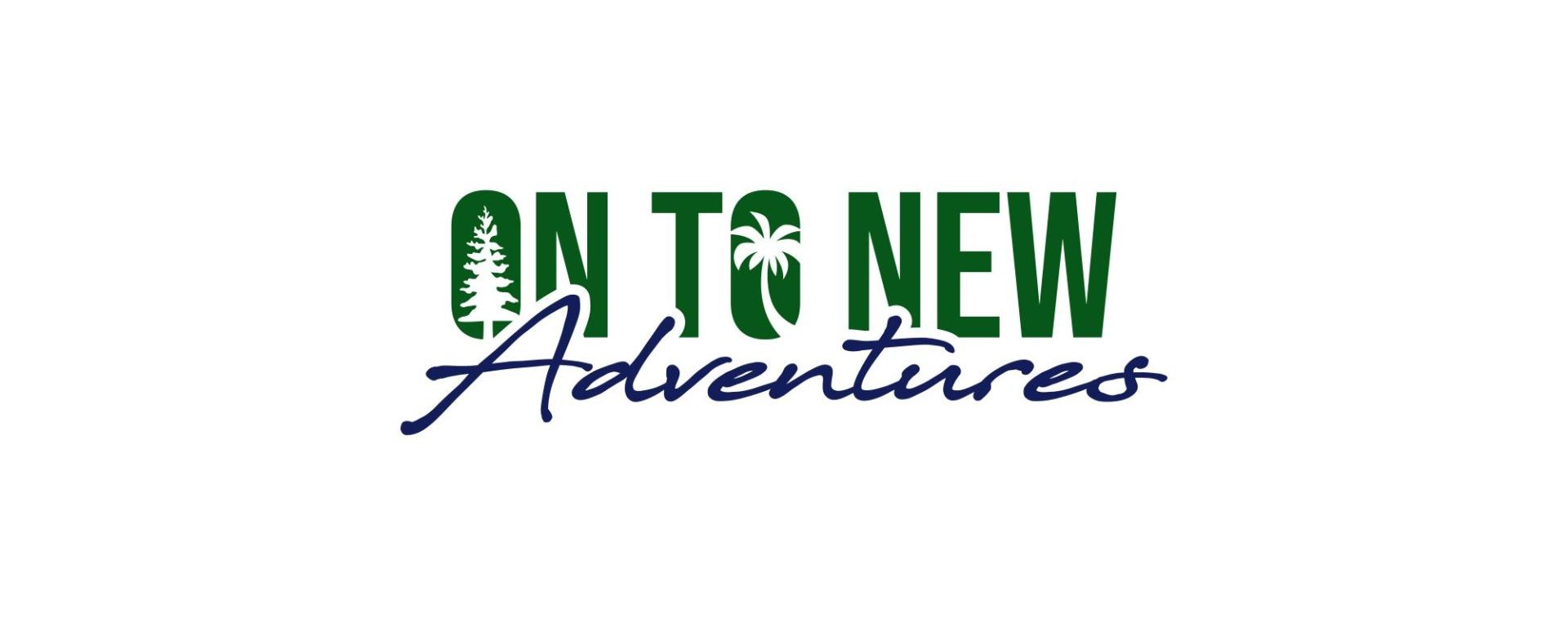

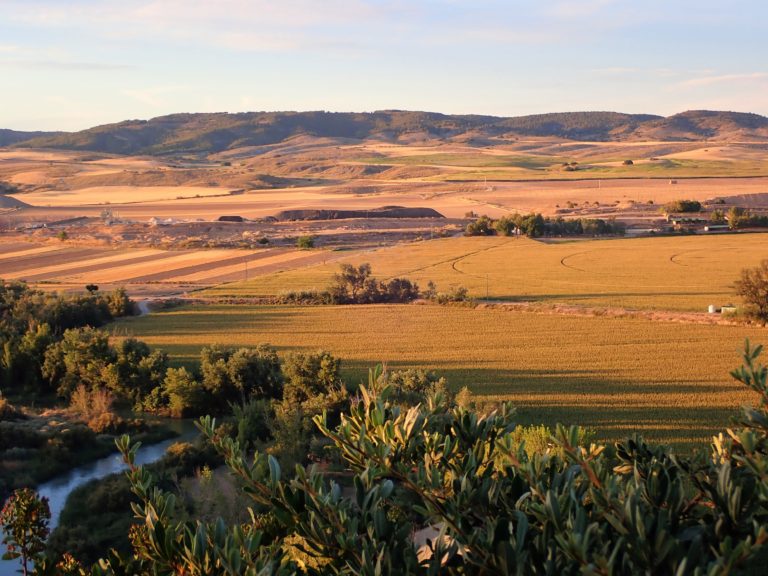
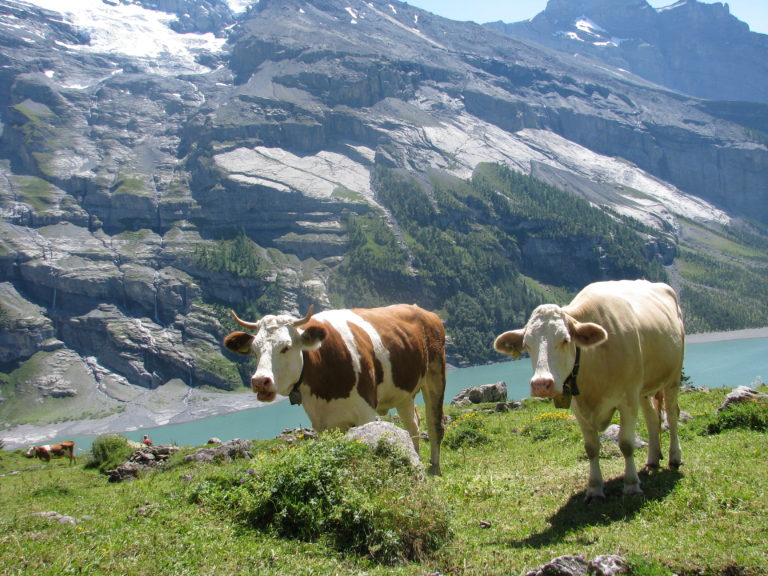

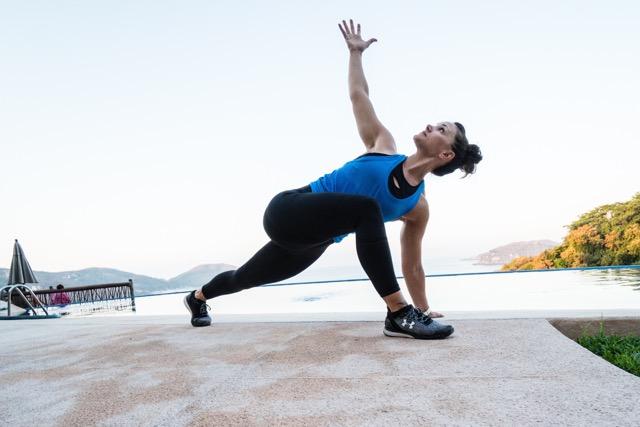
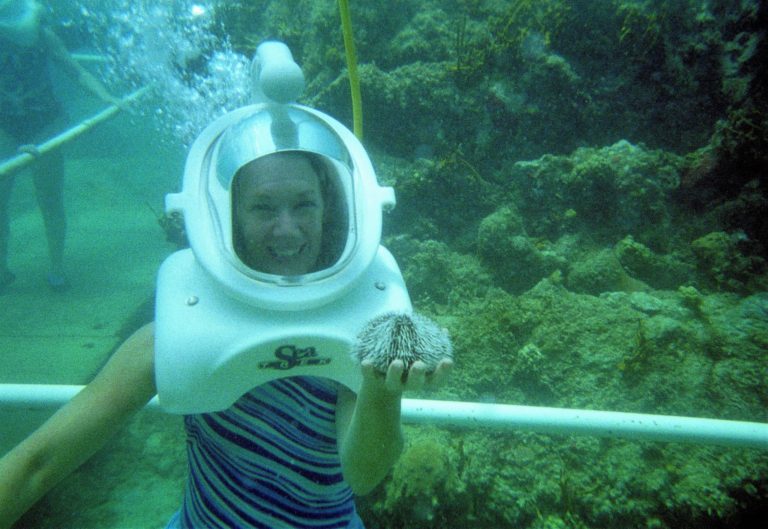
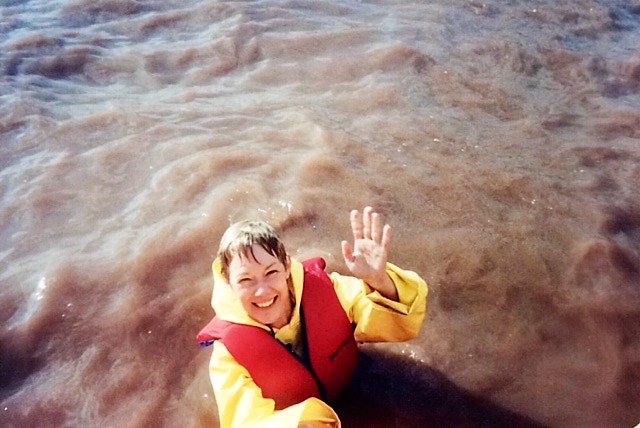
2 Comments
Comments are closed.